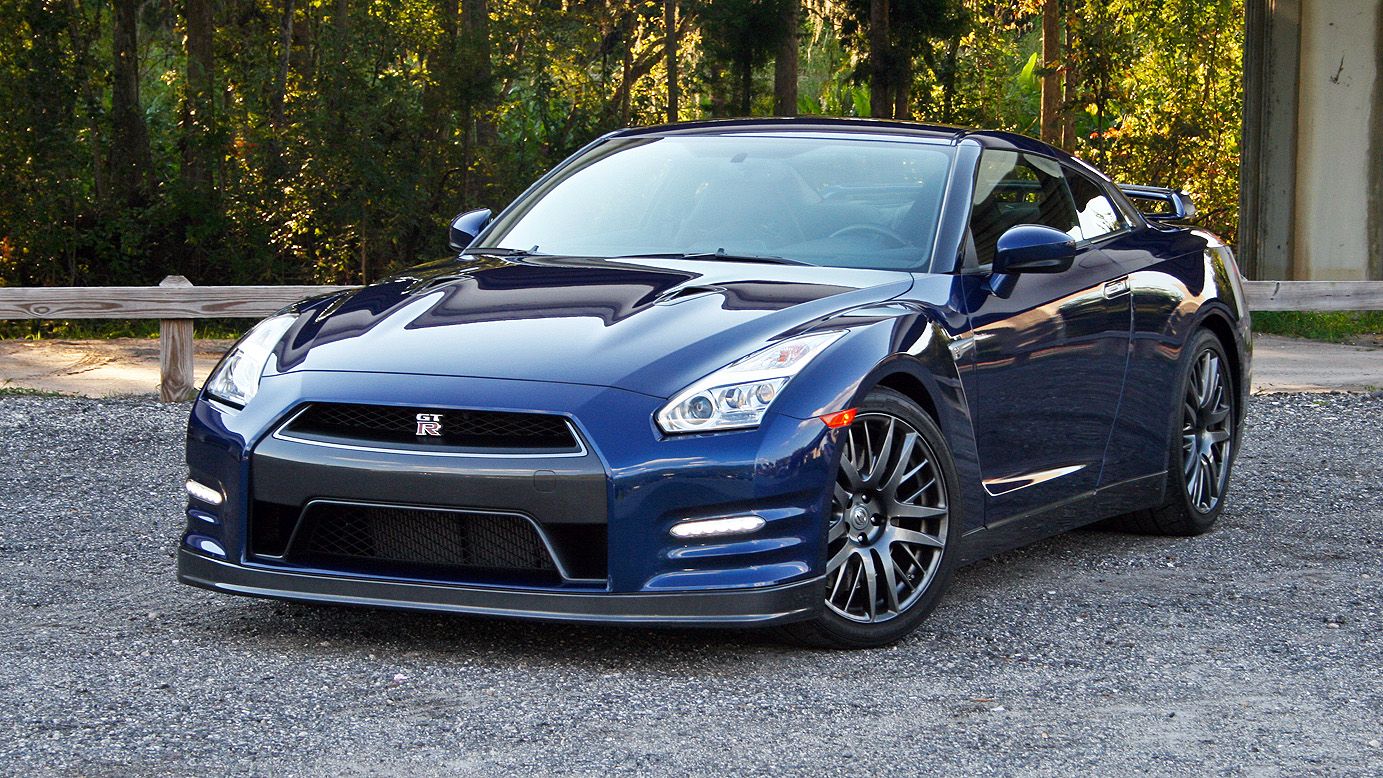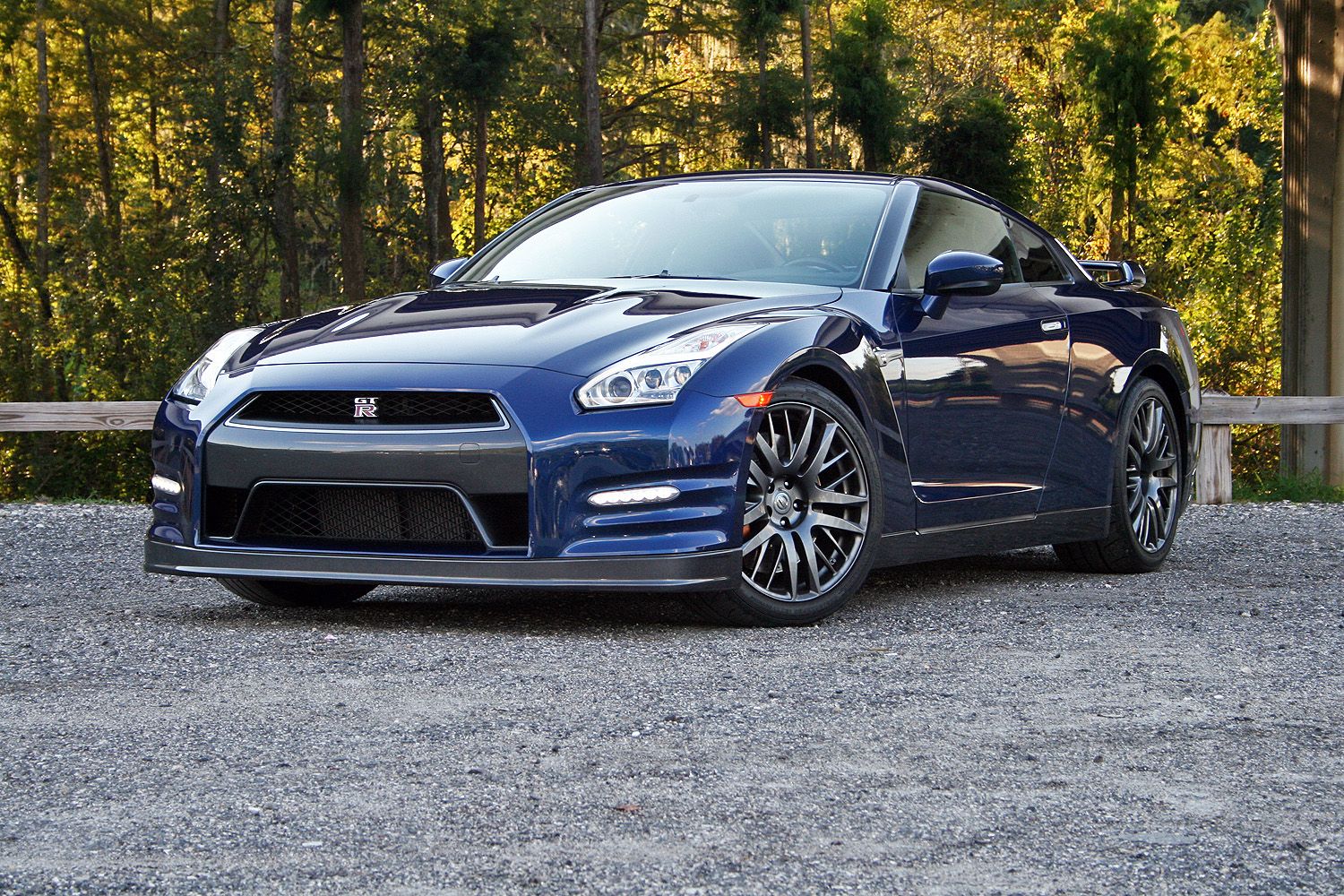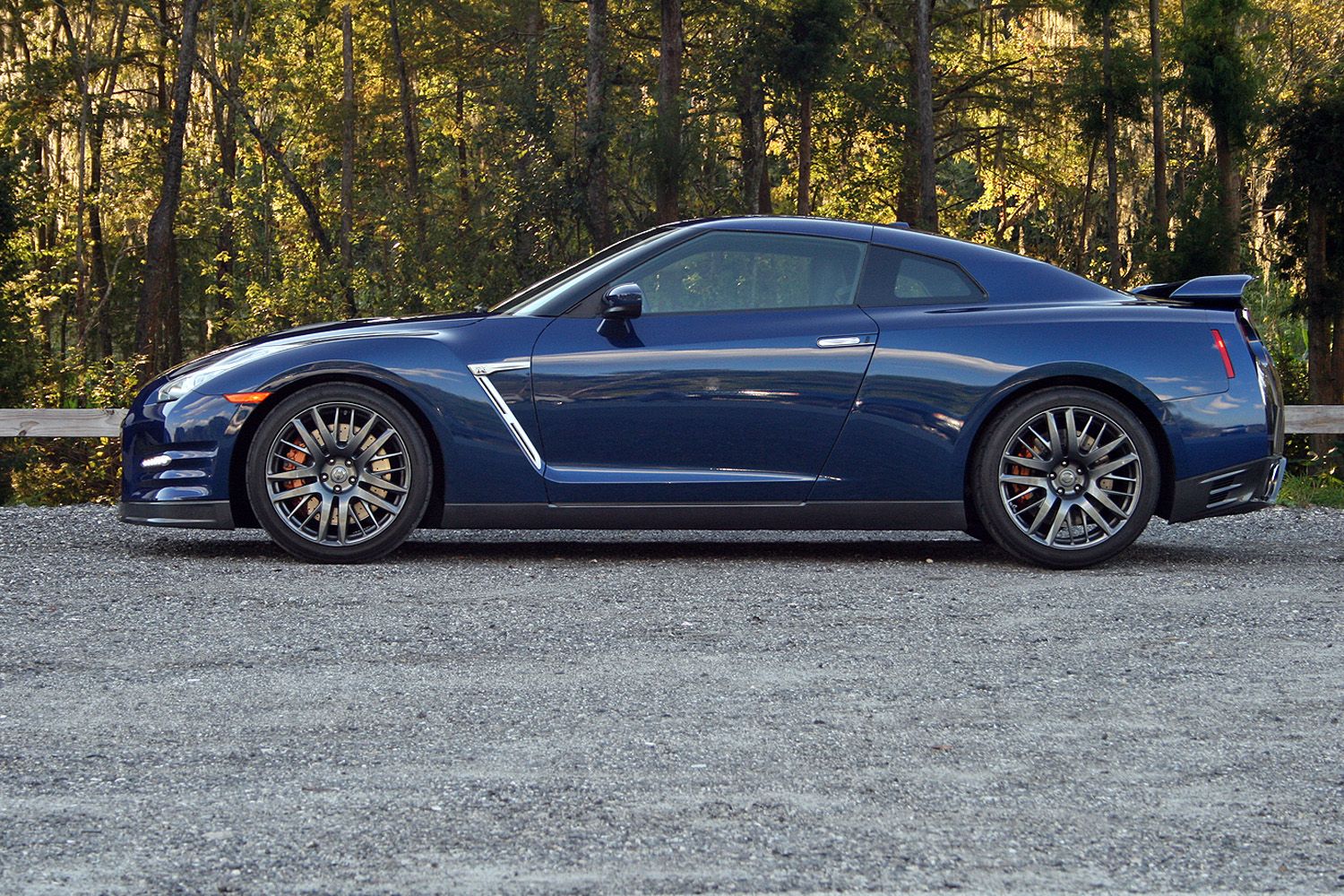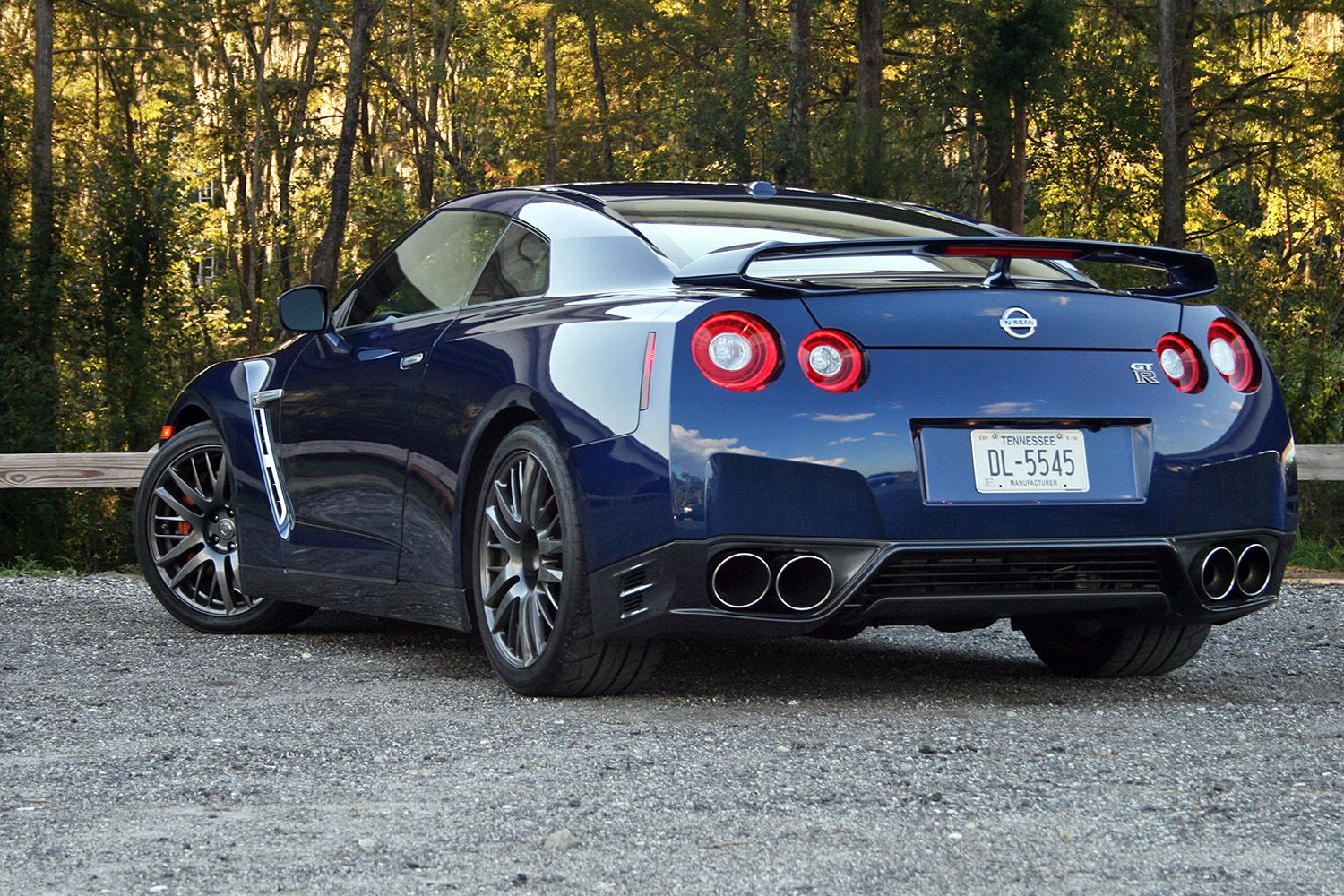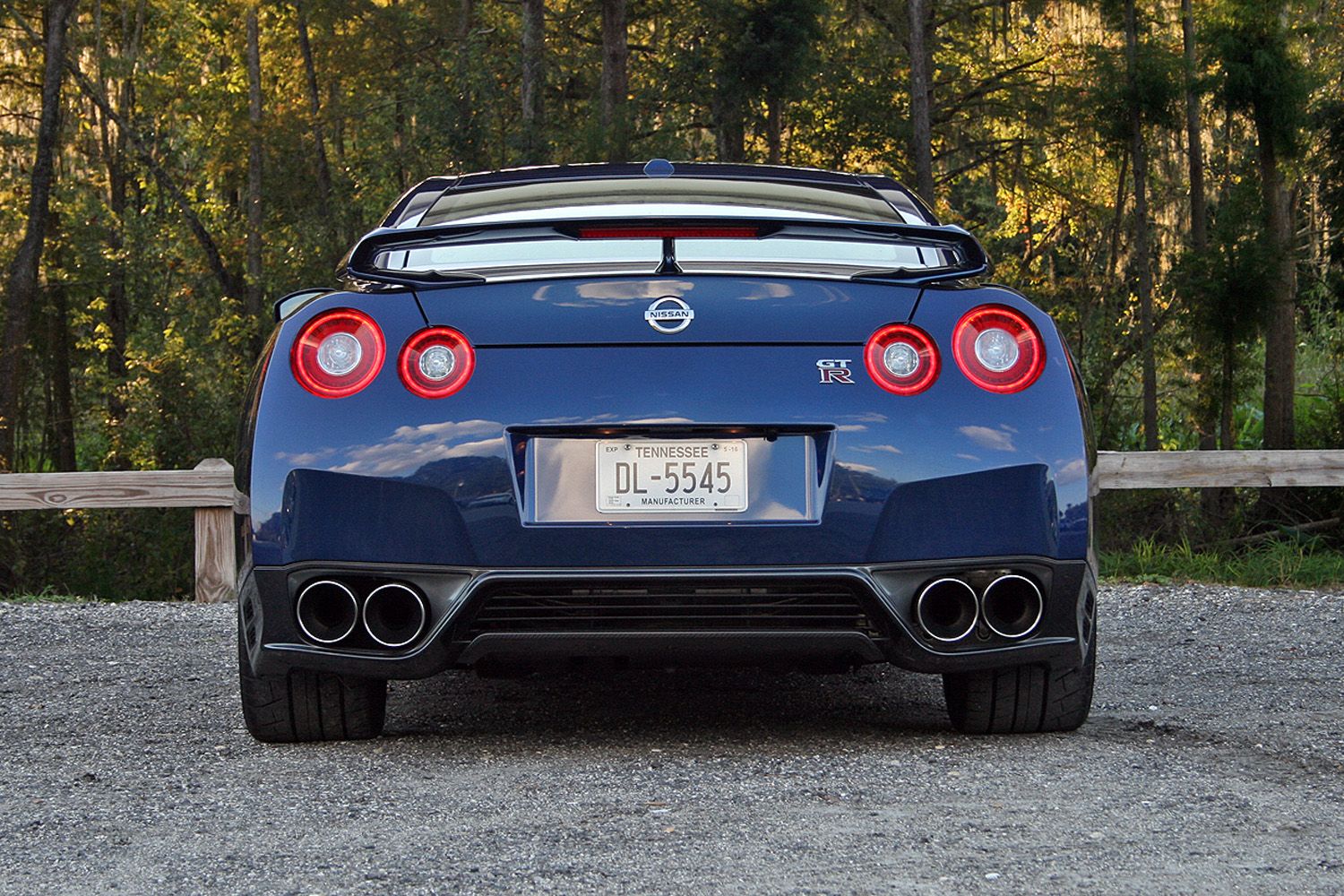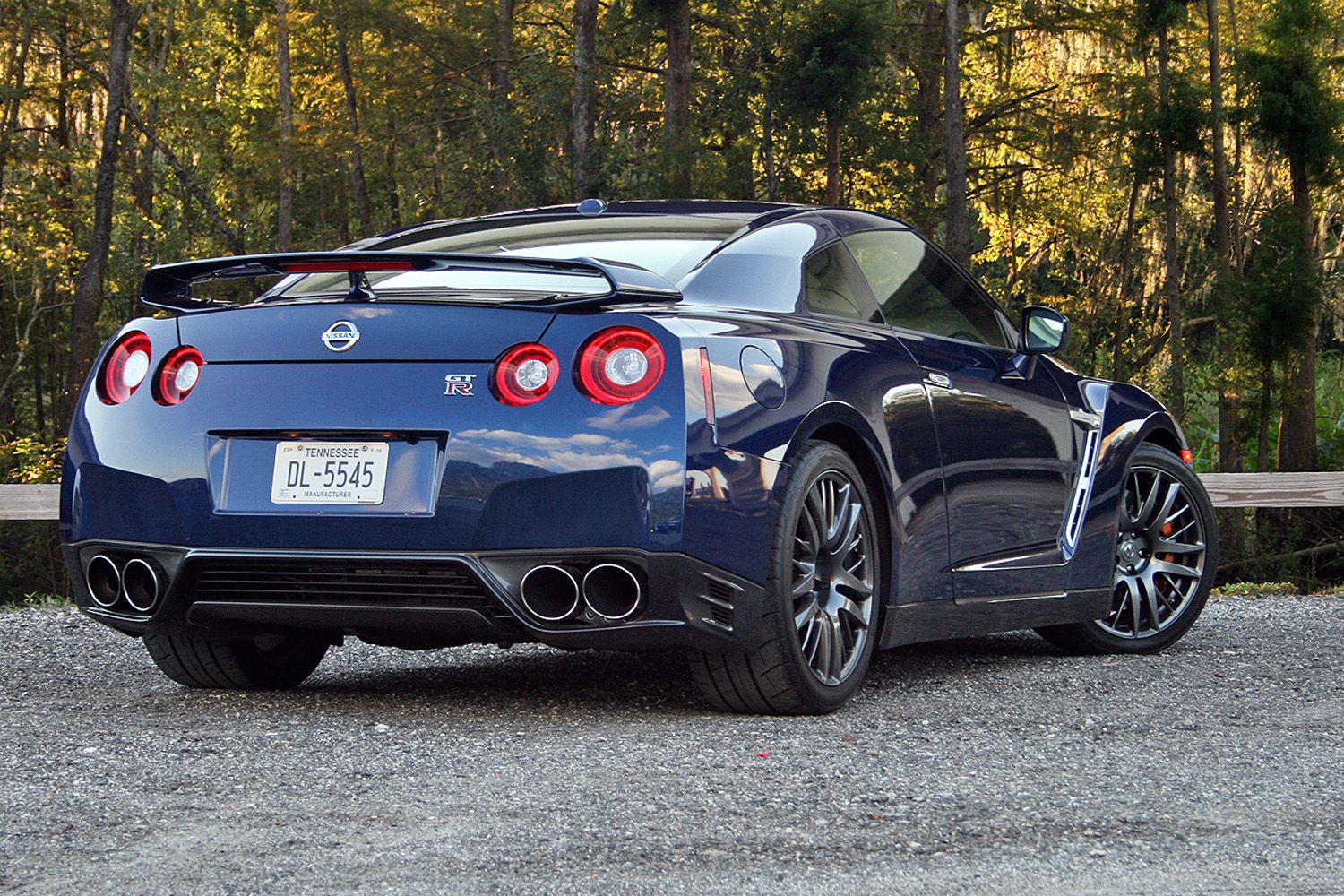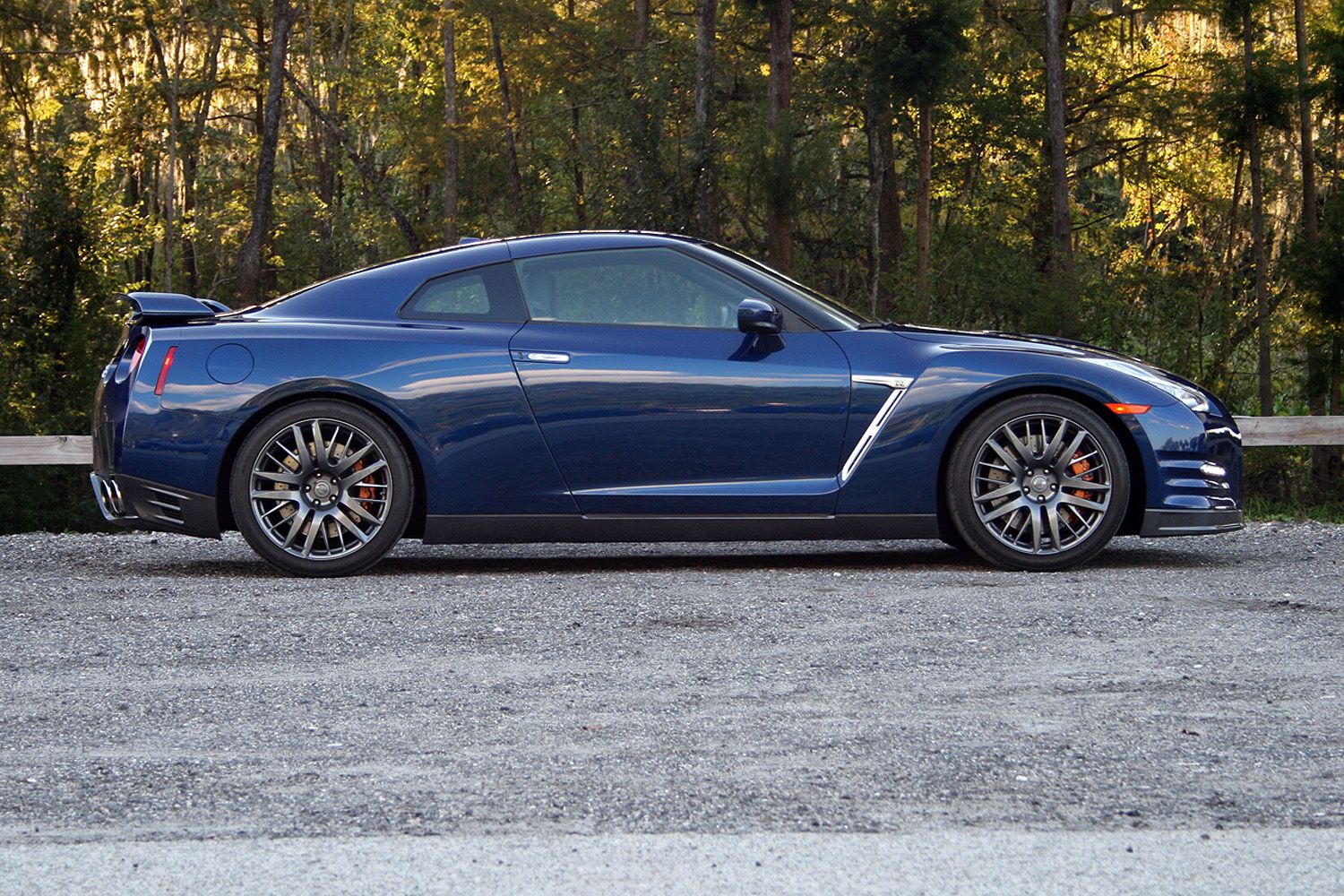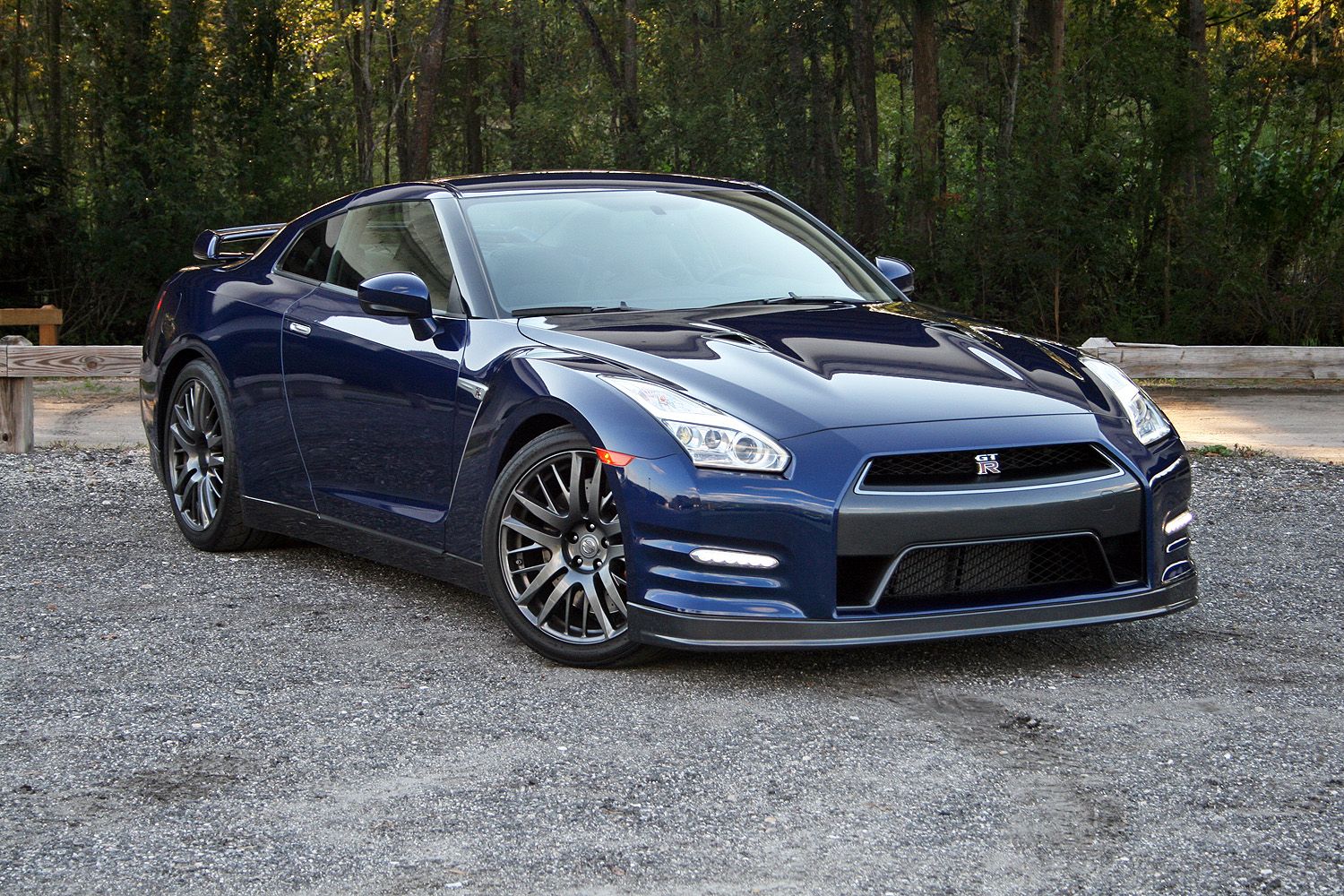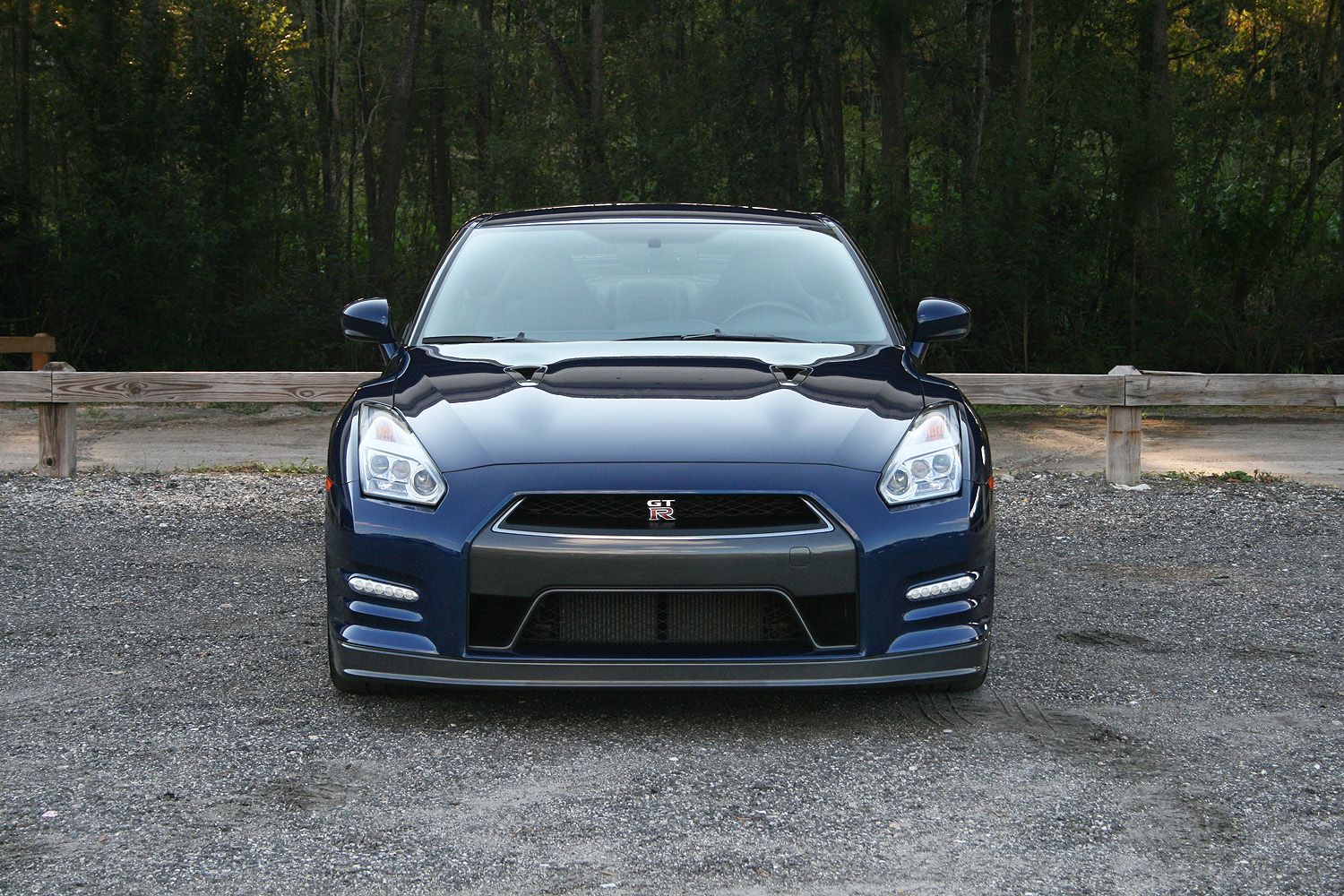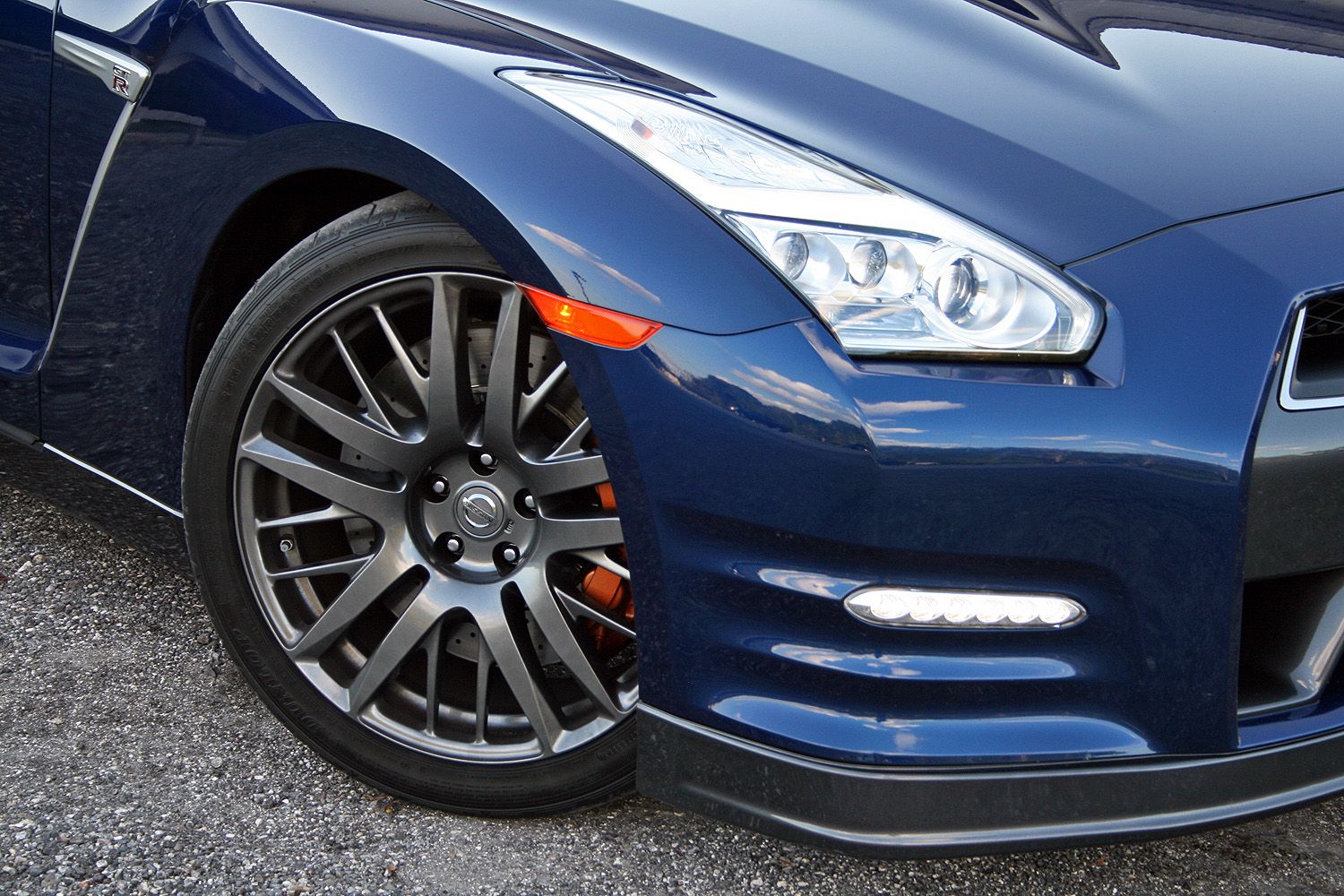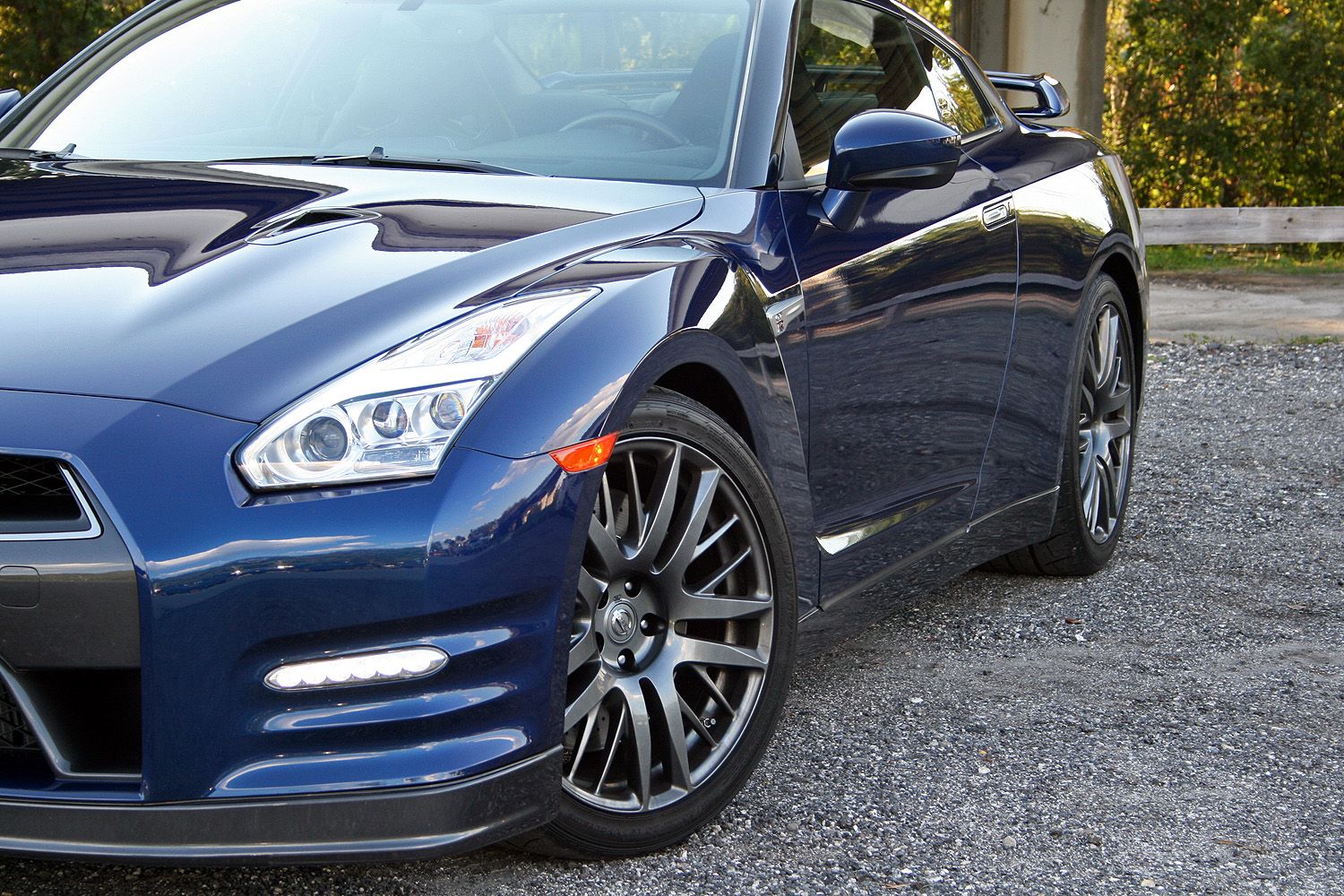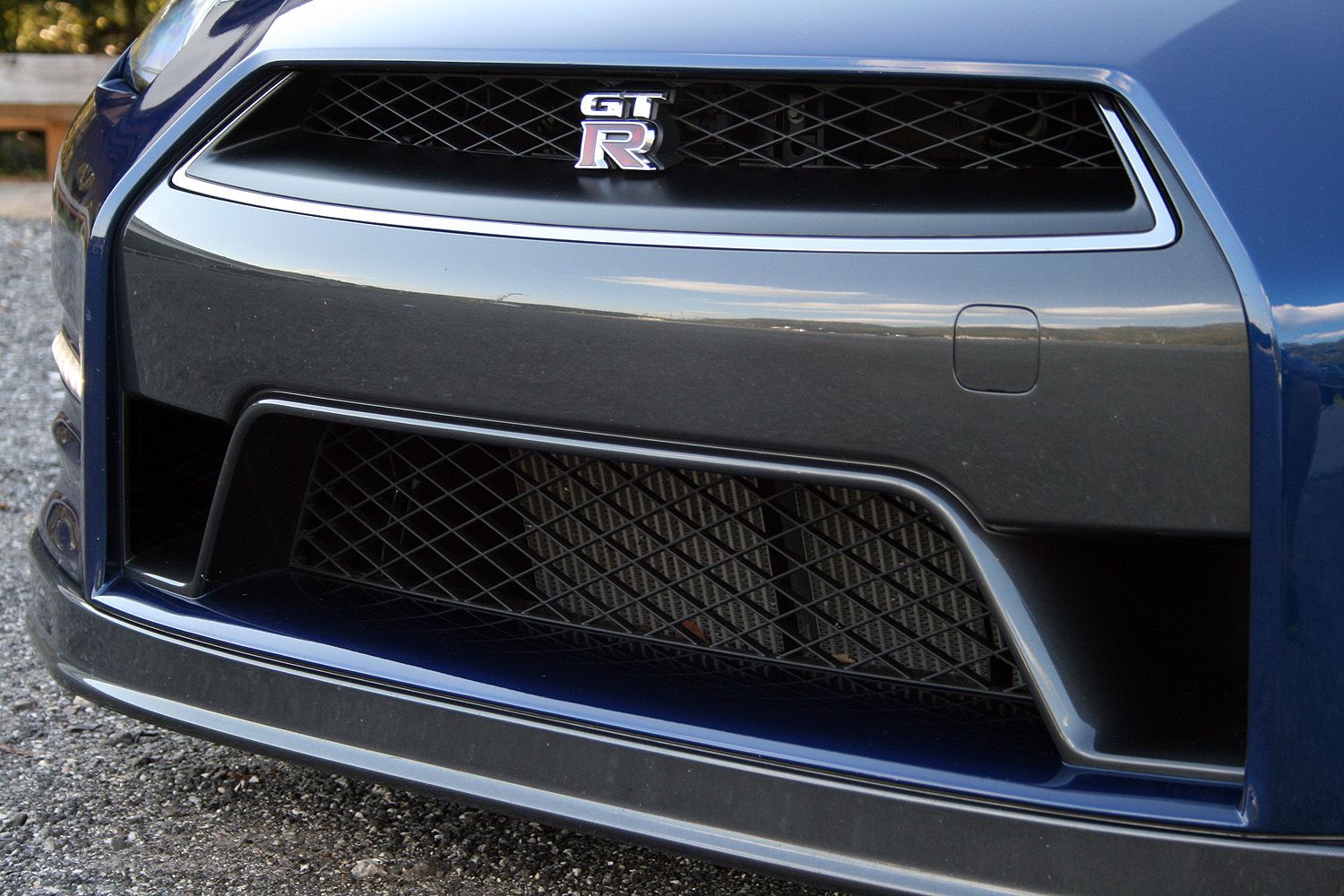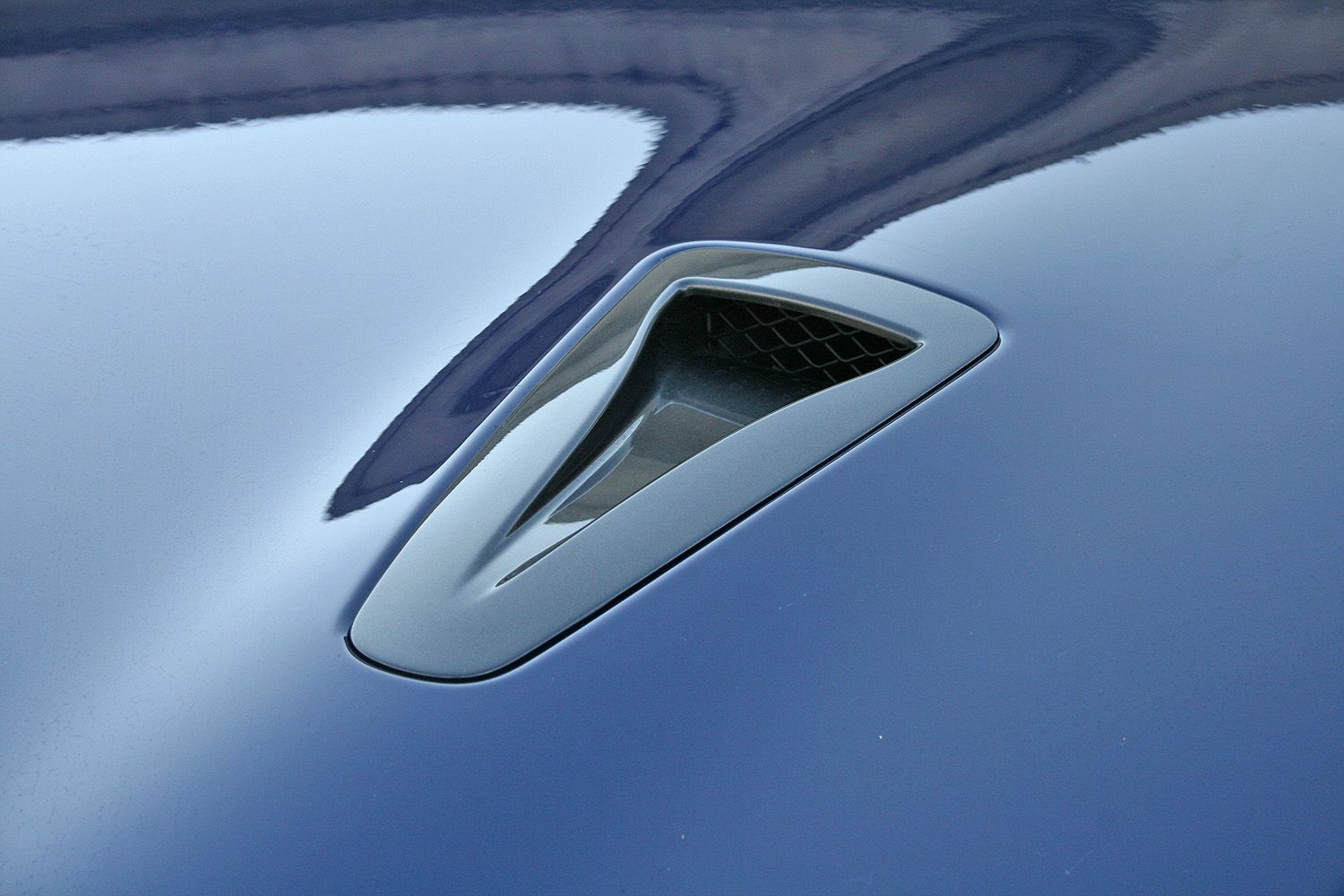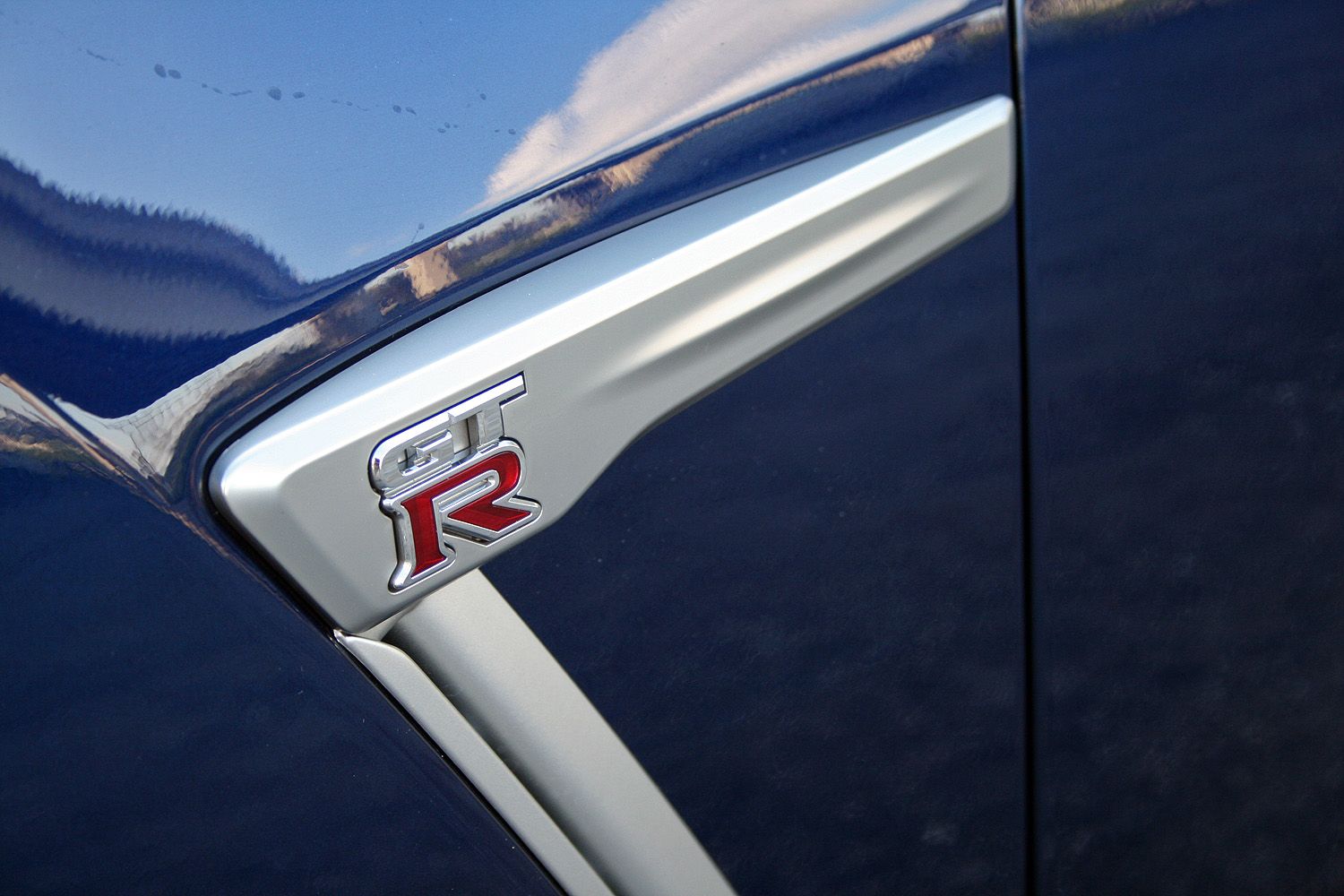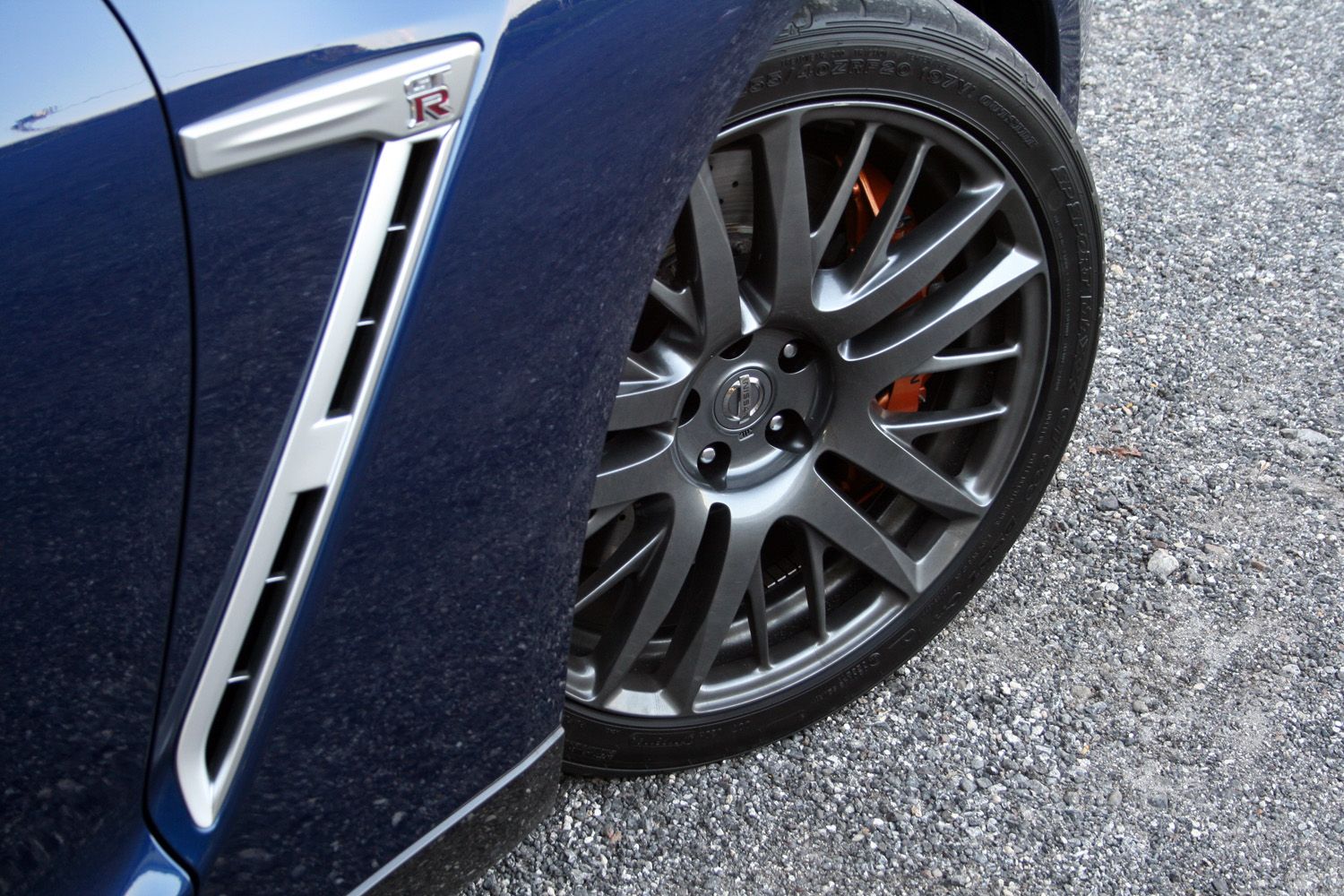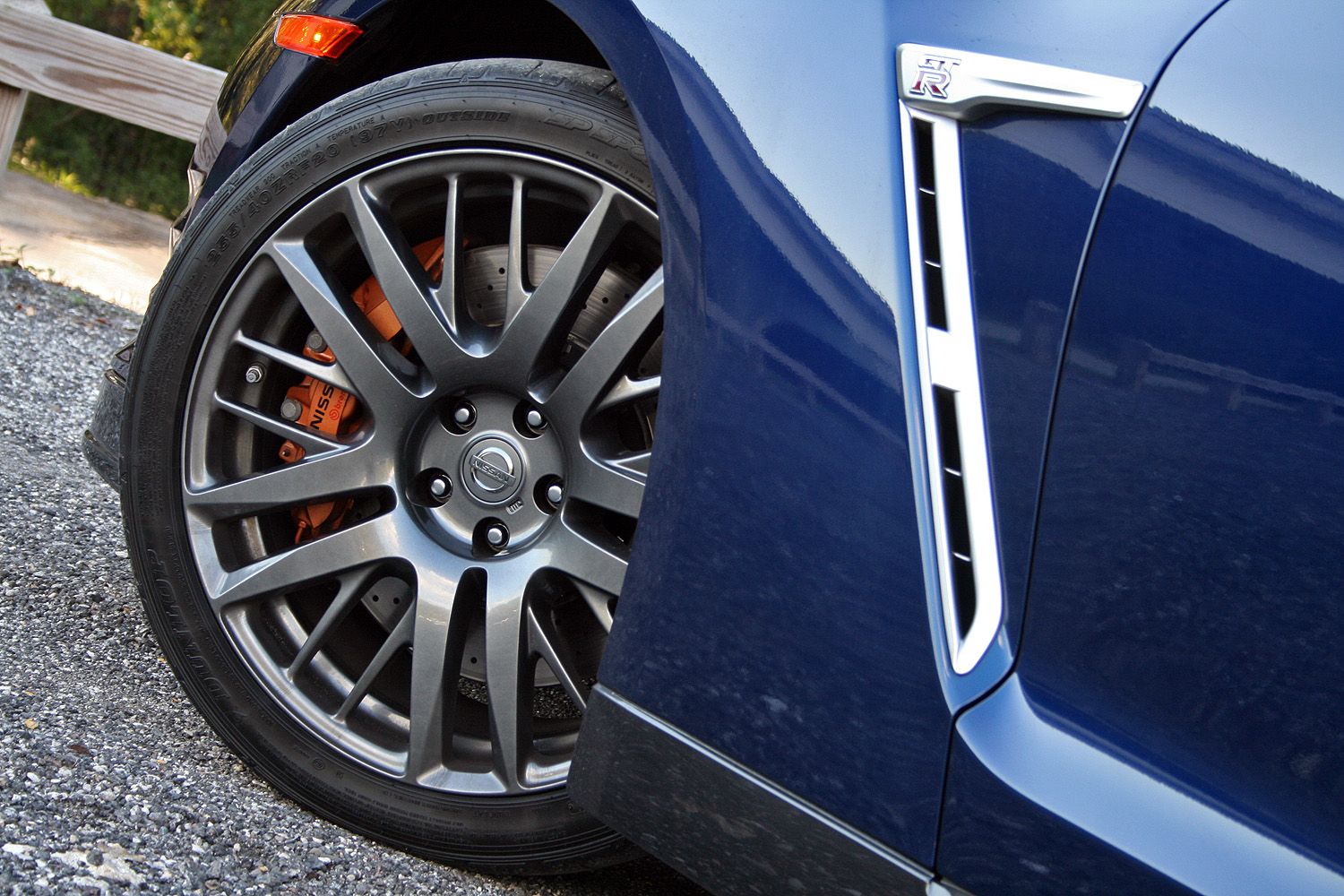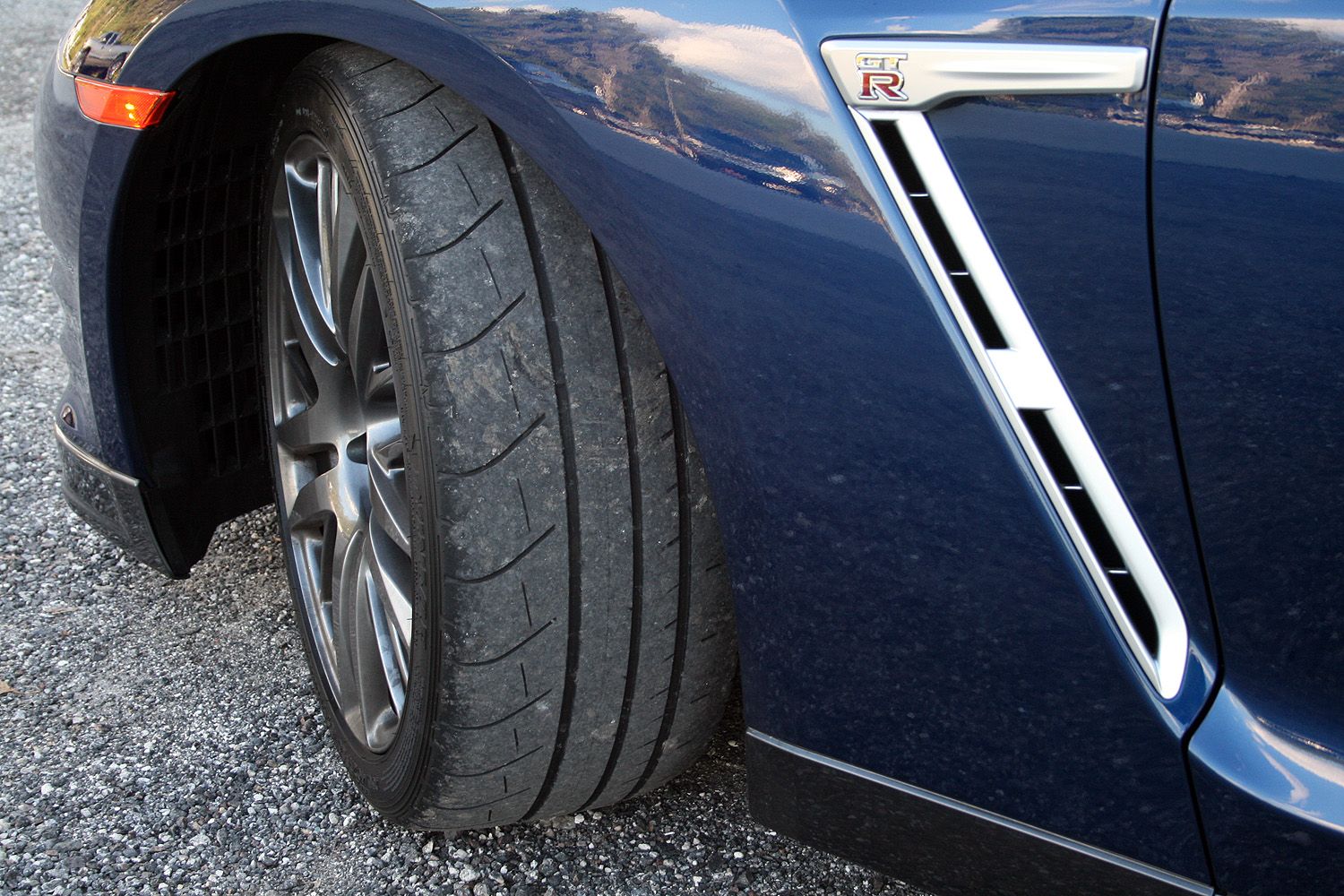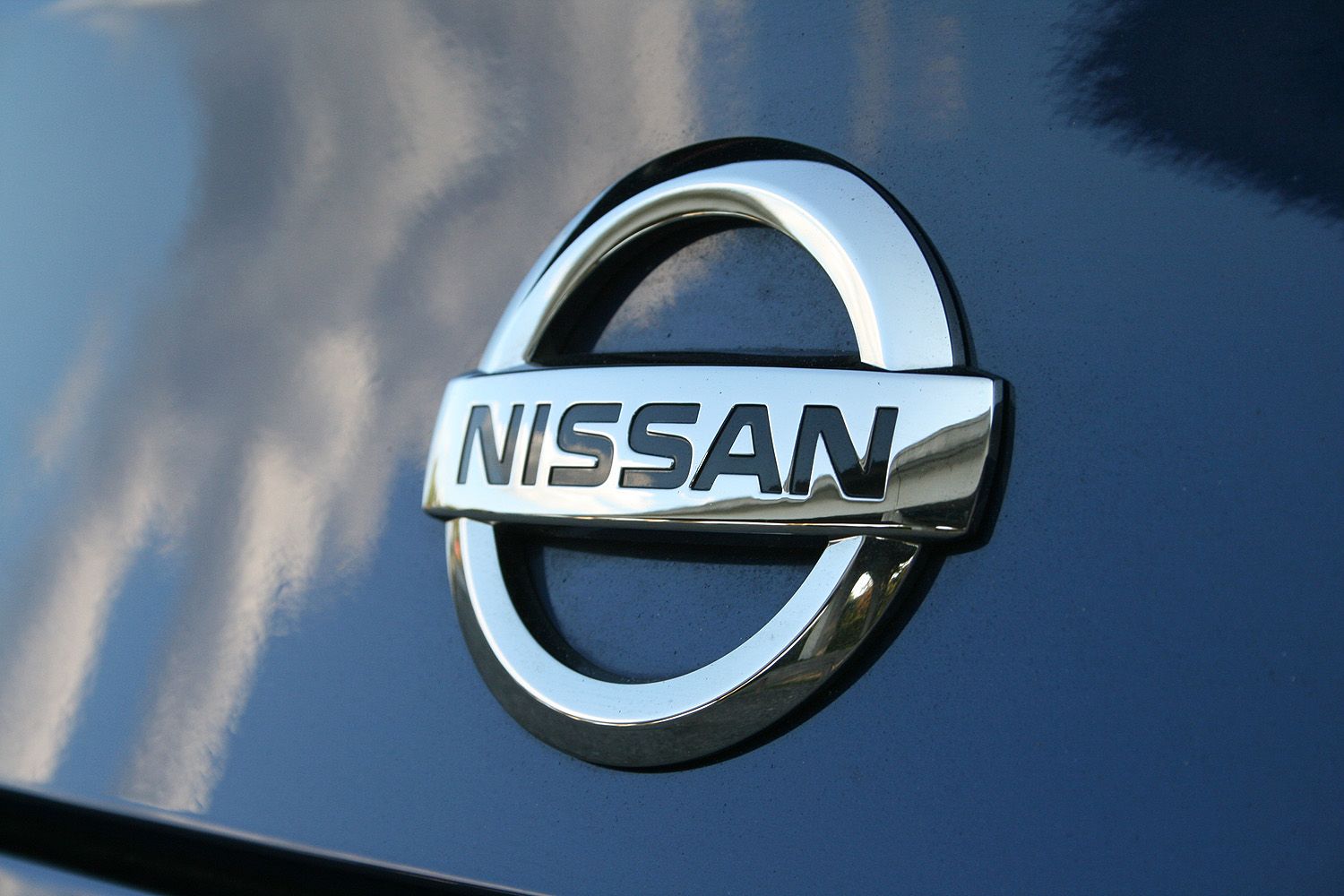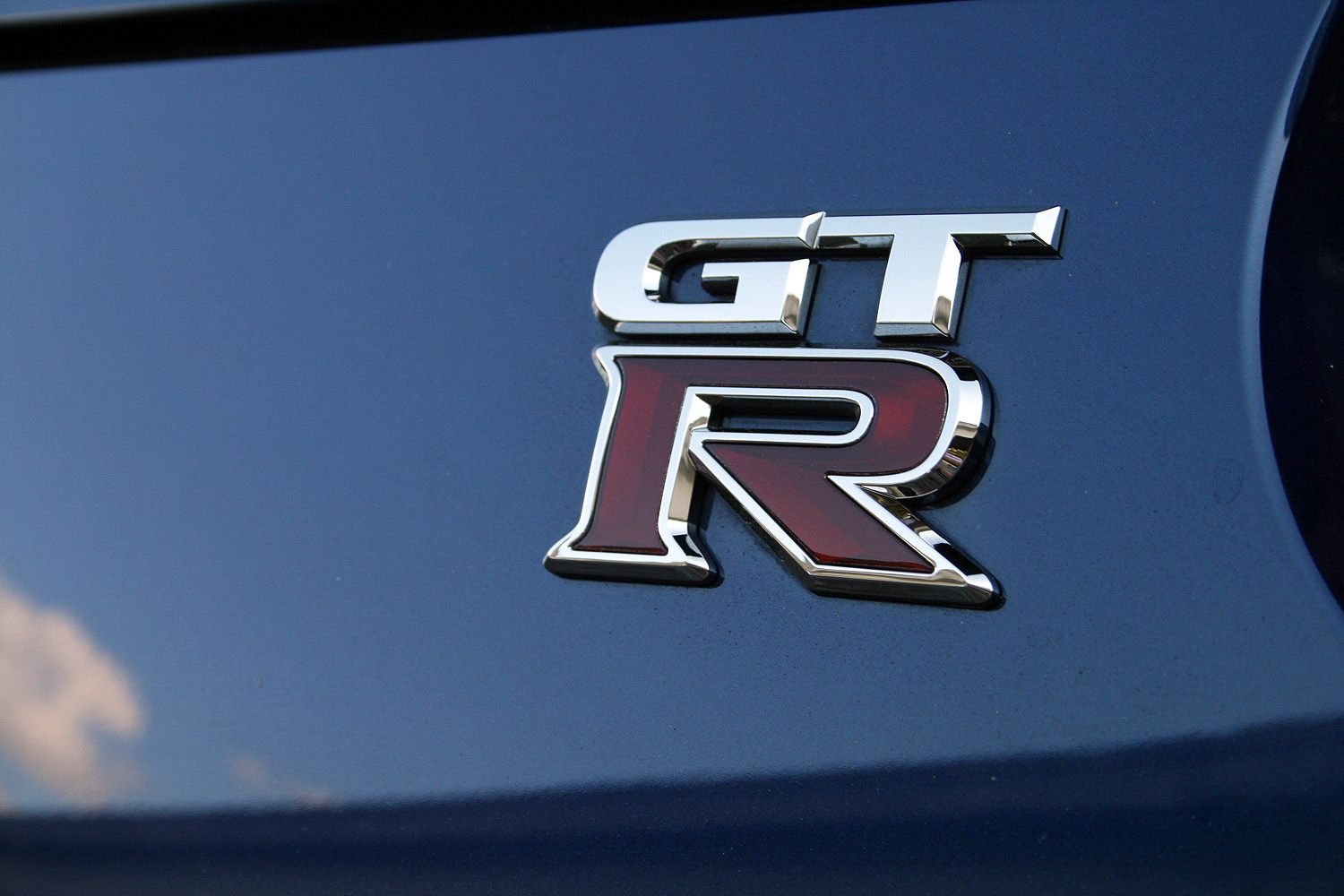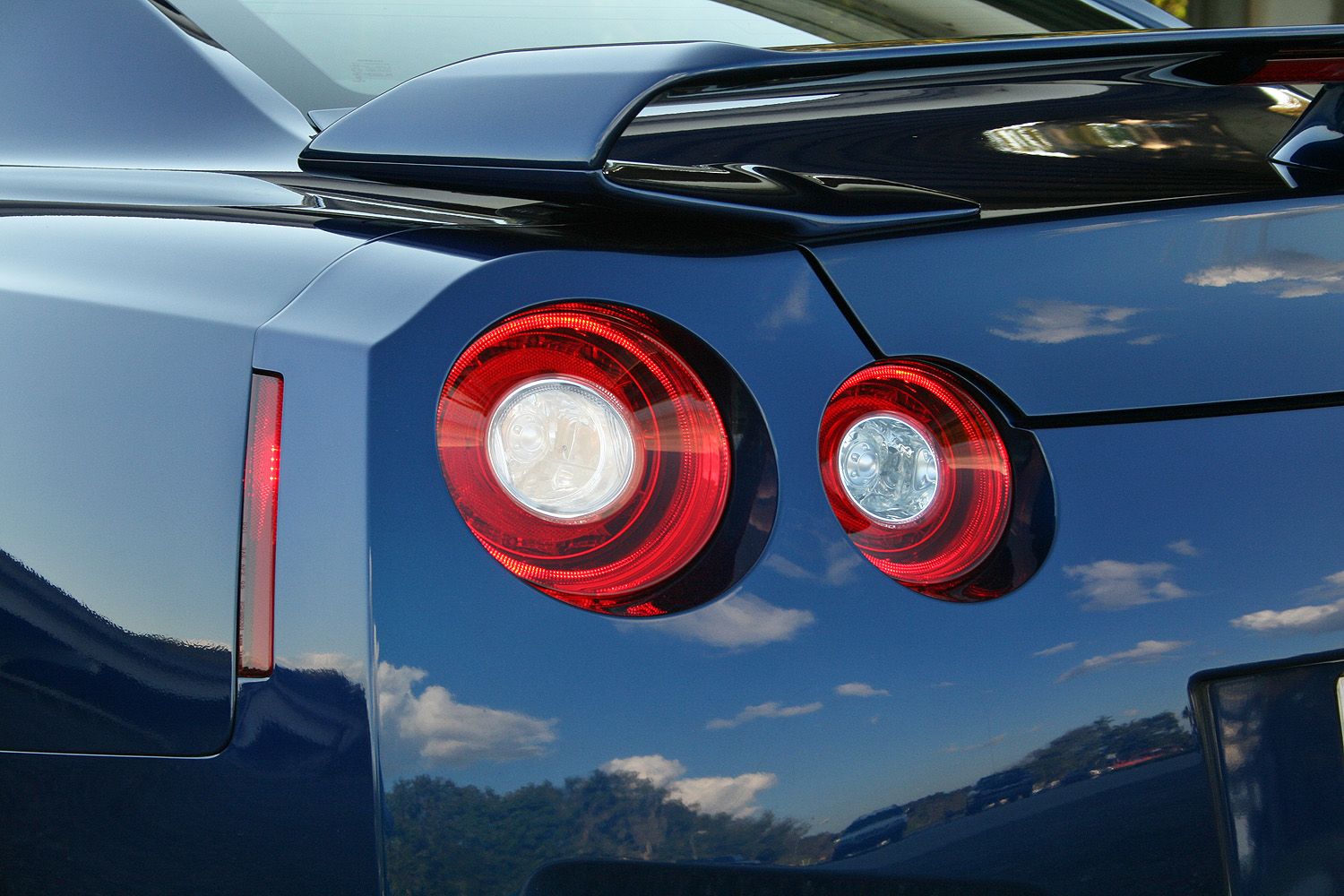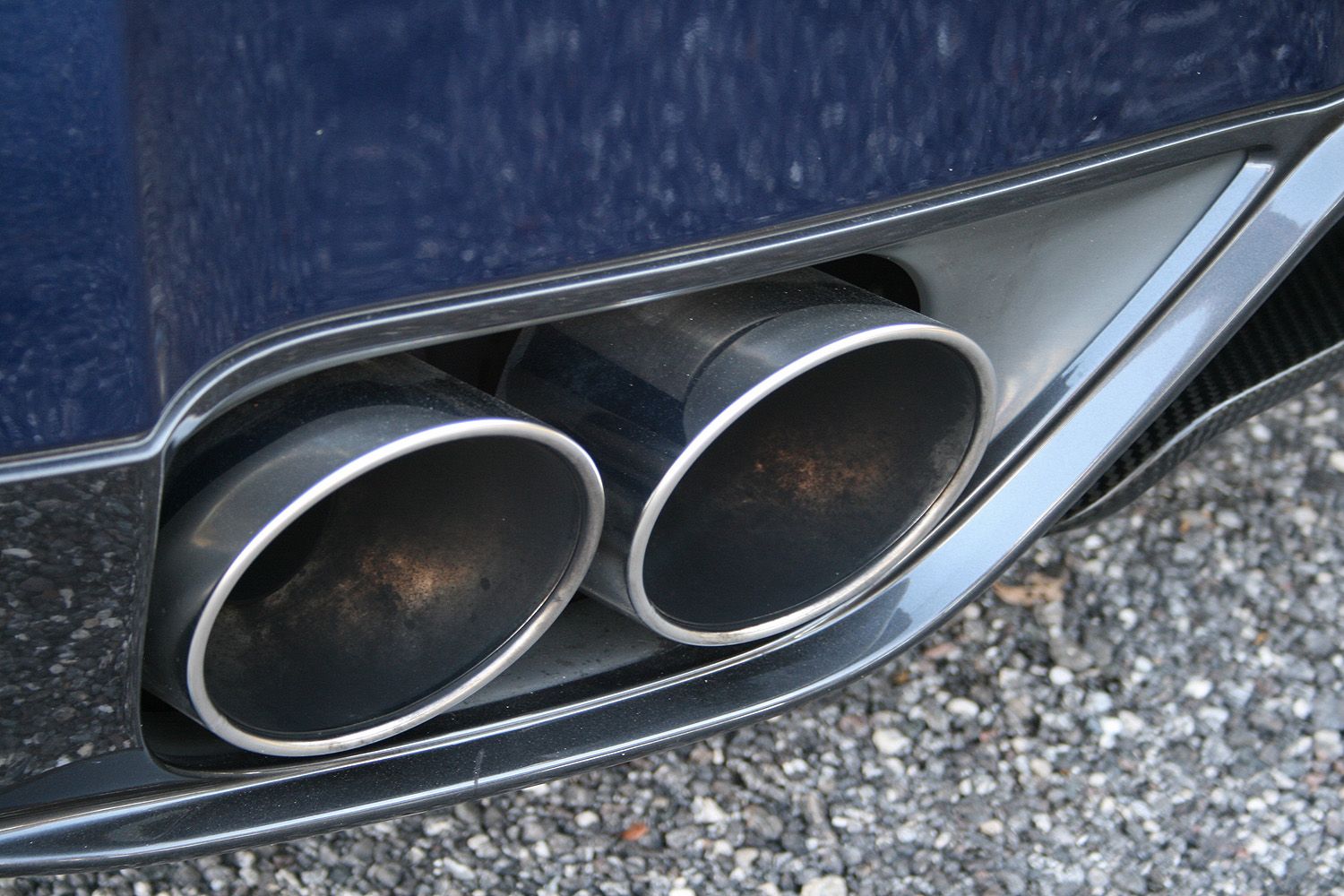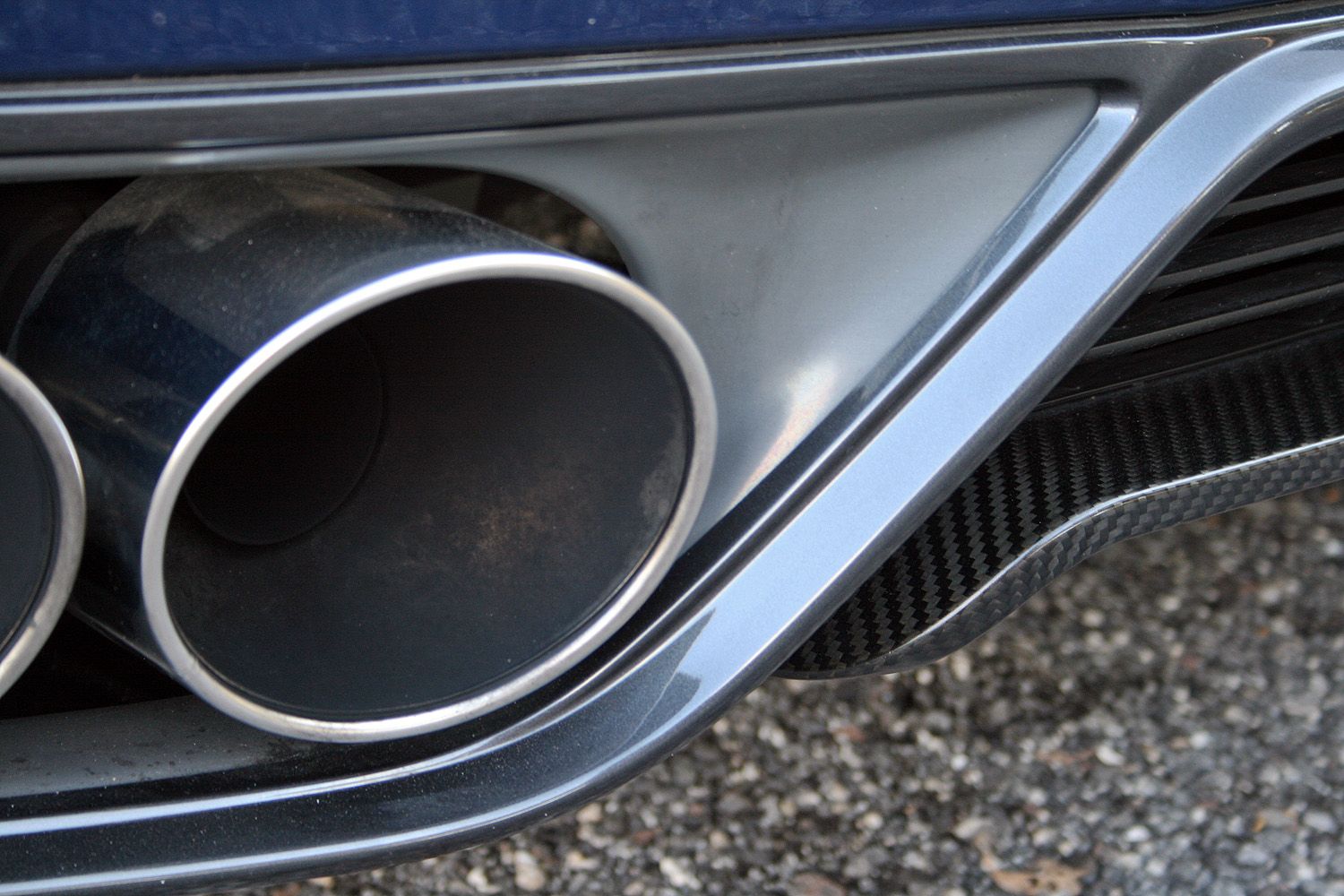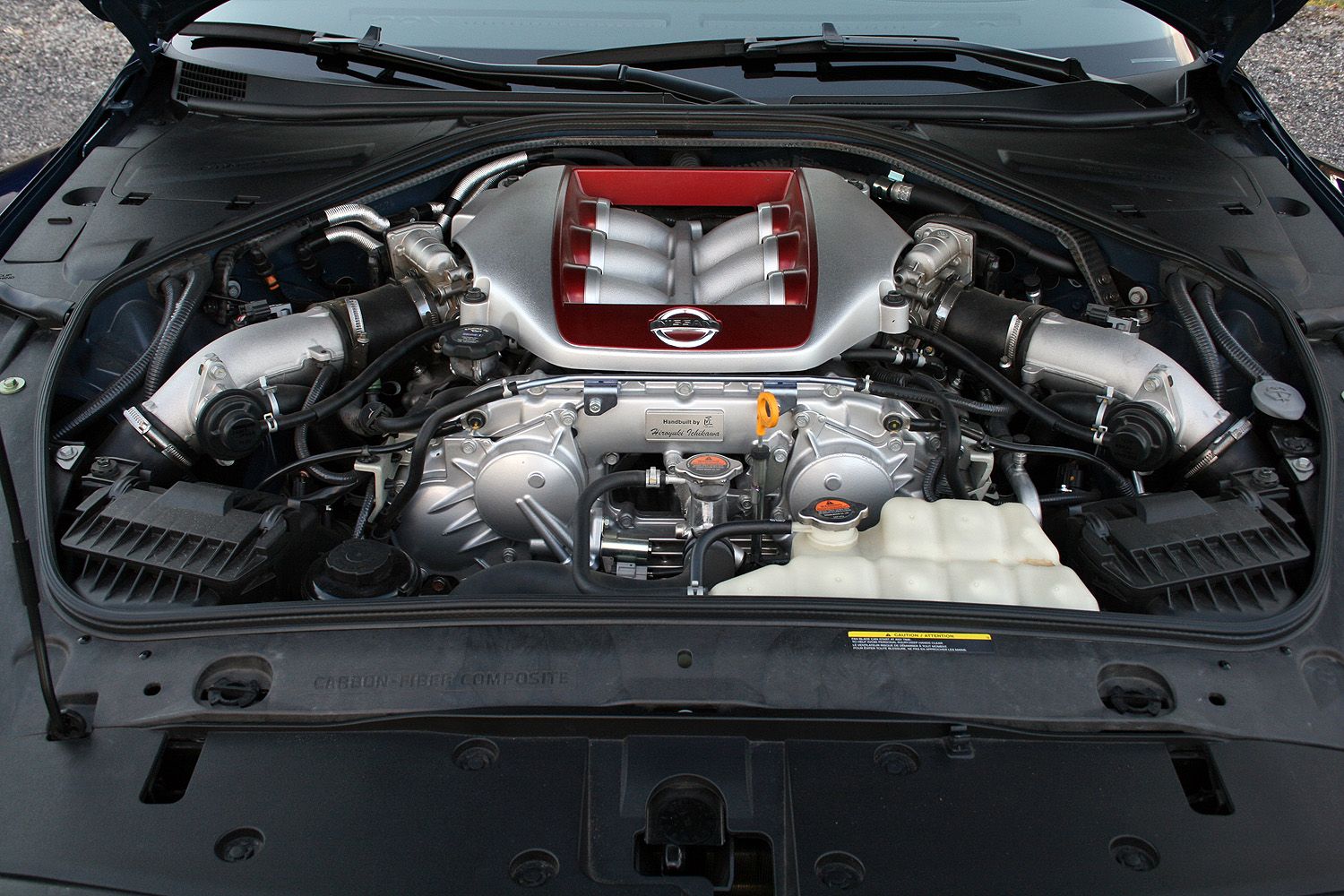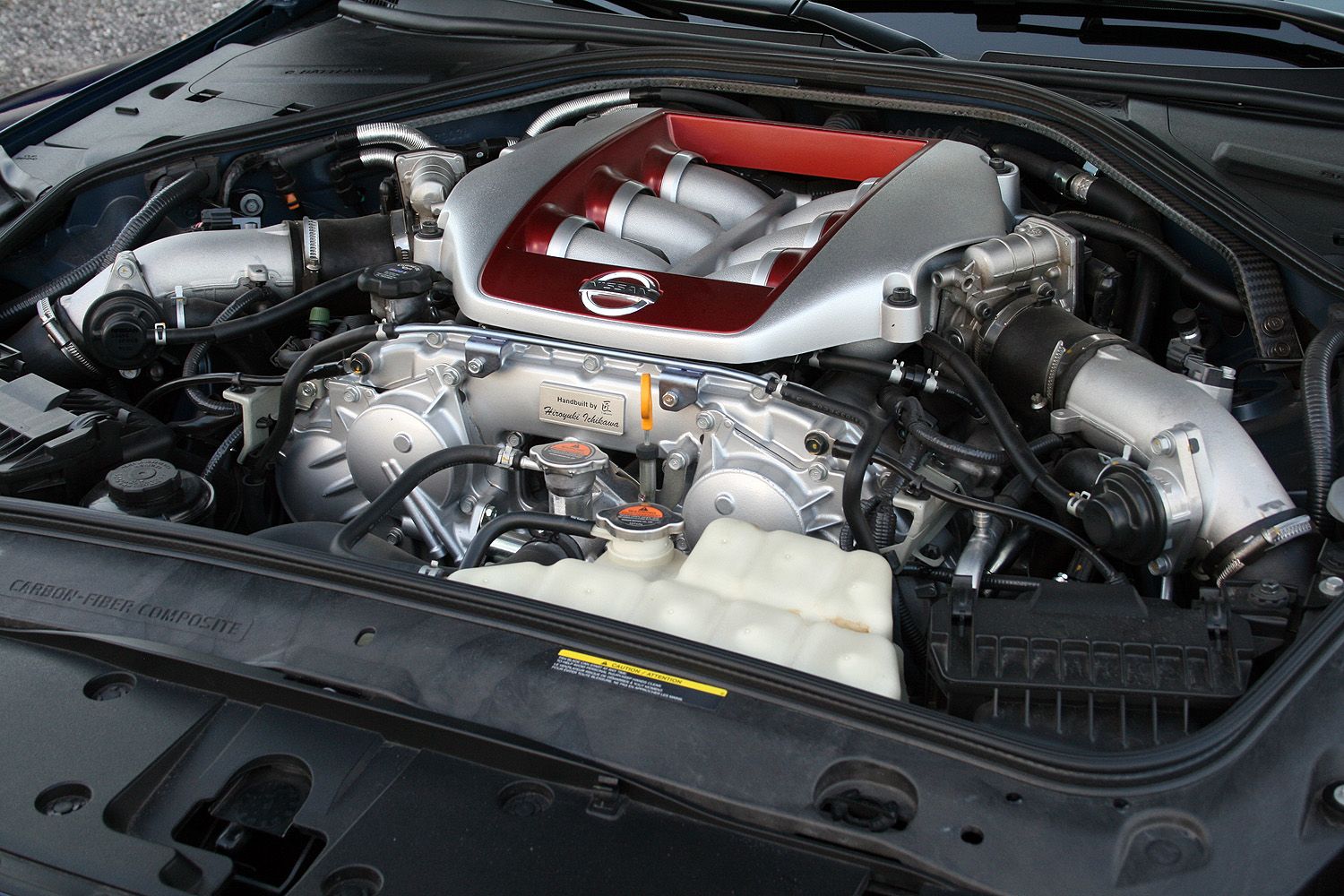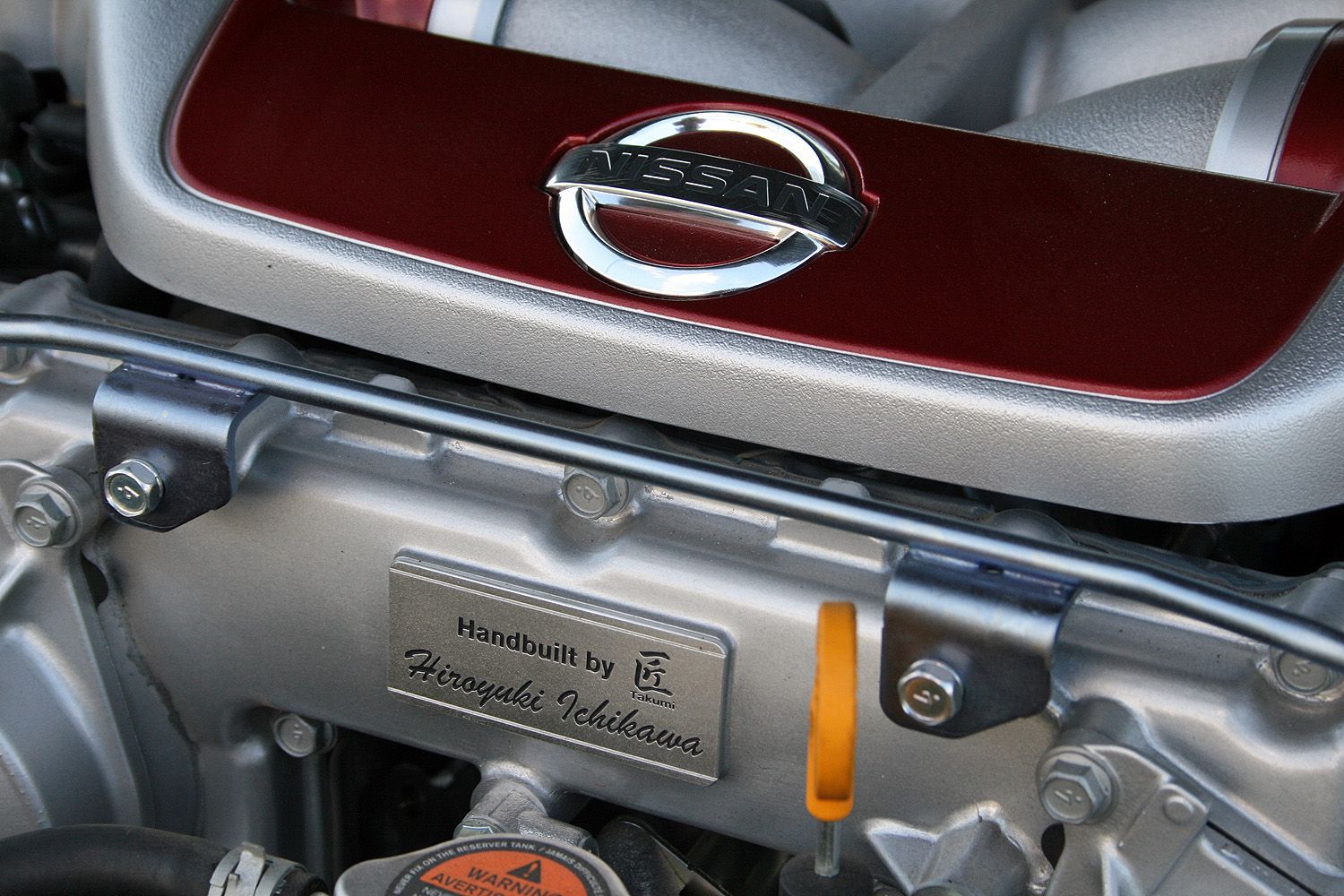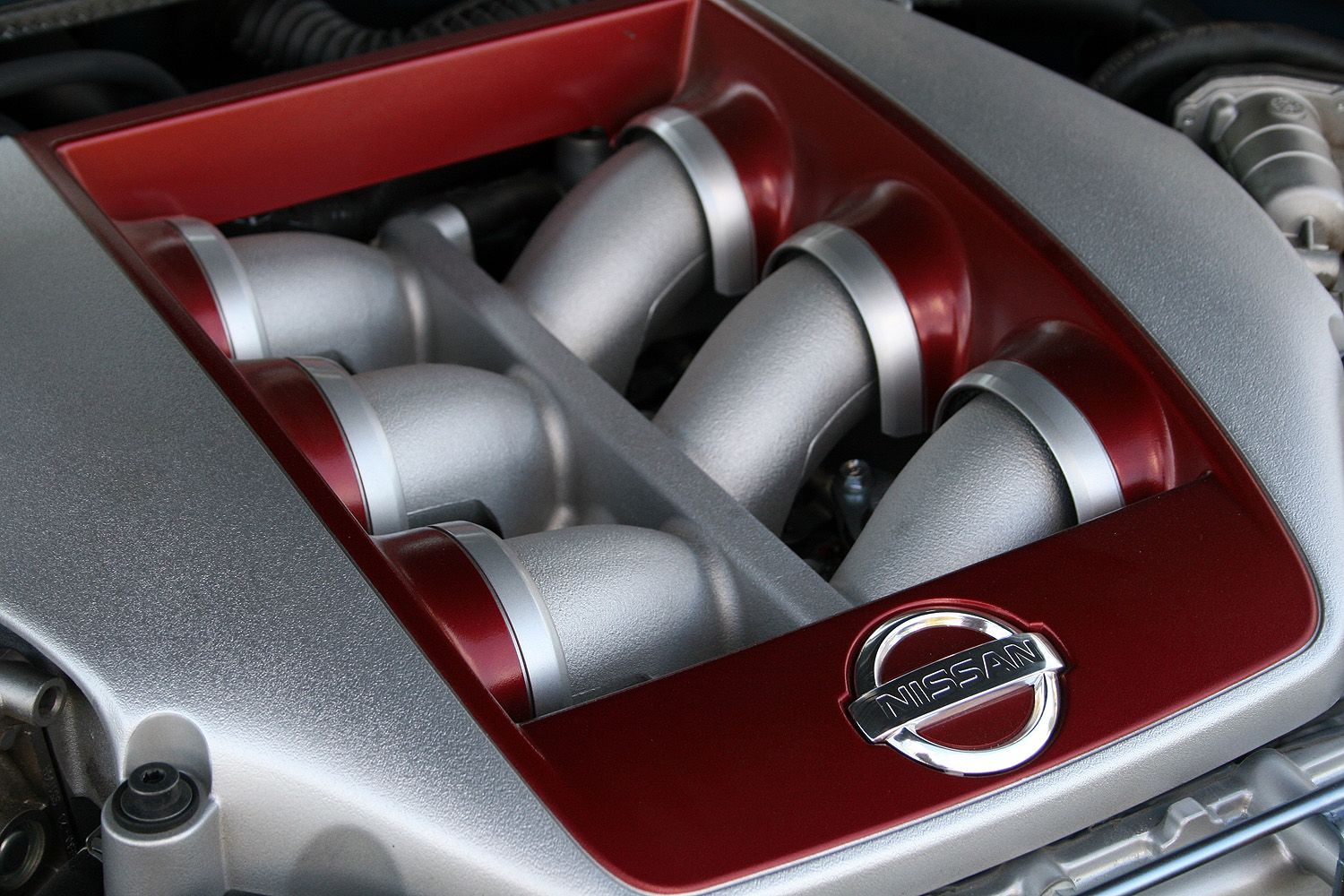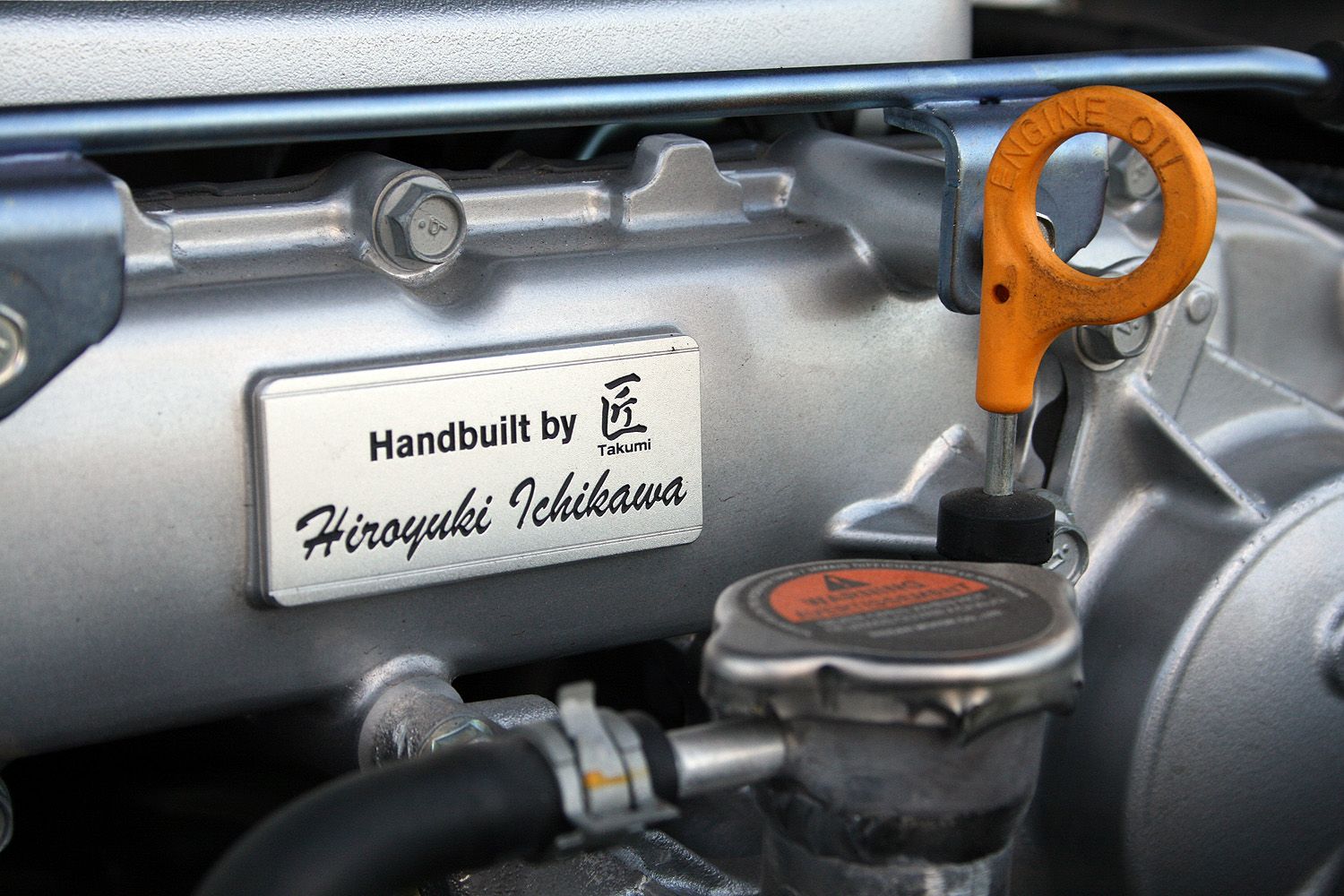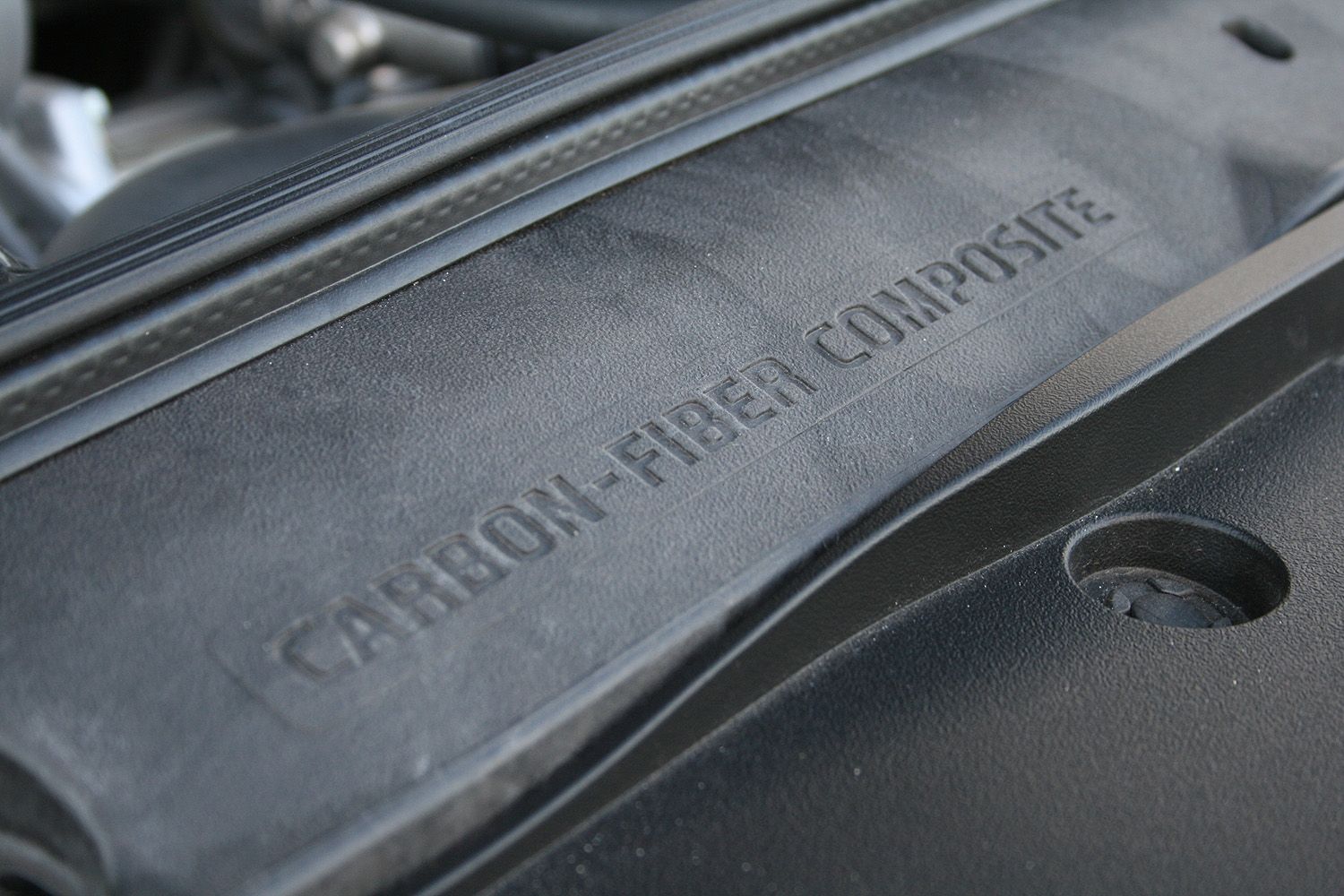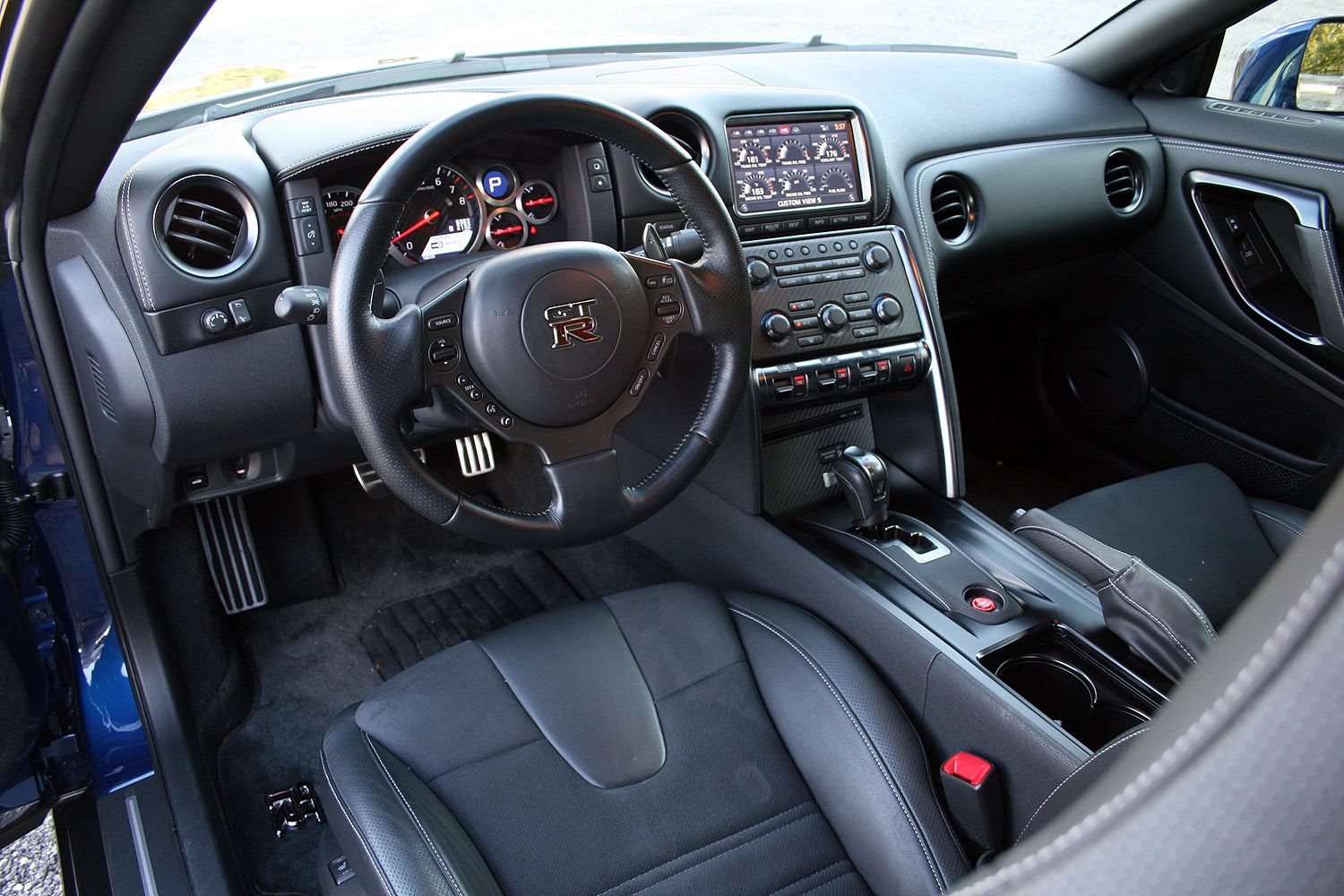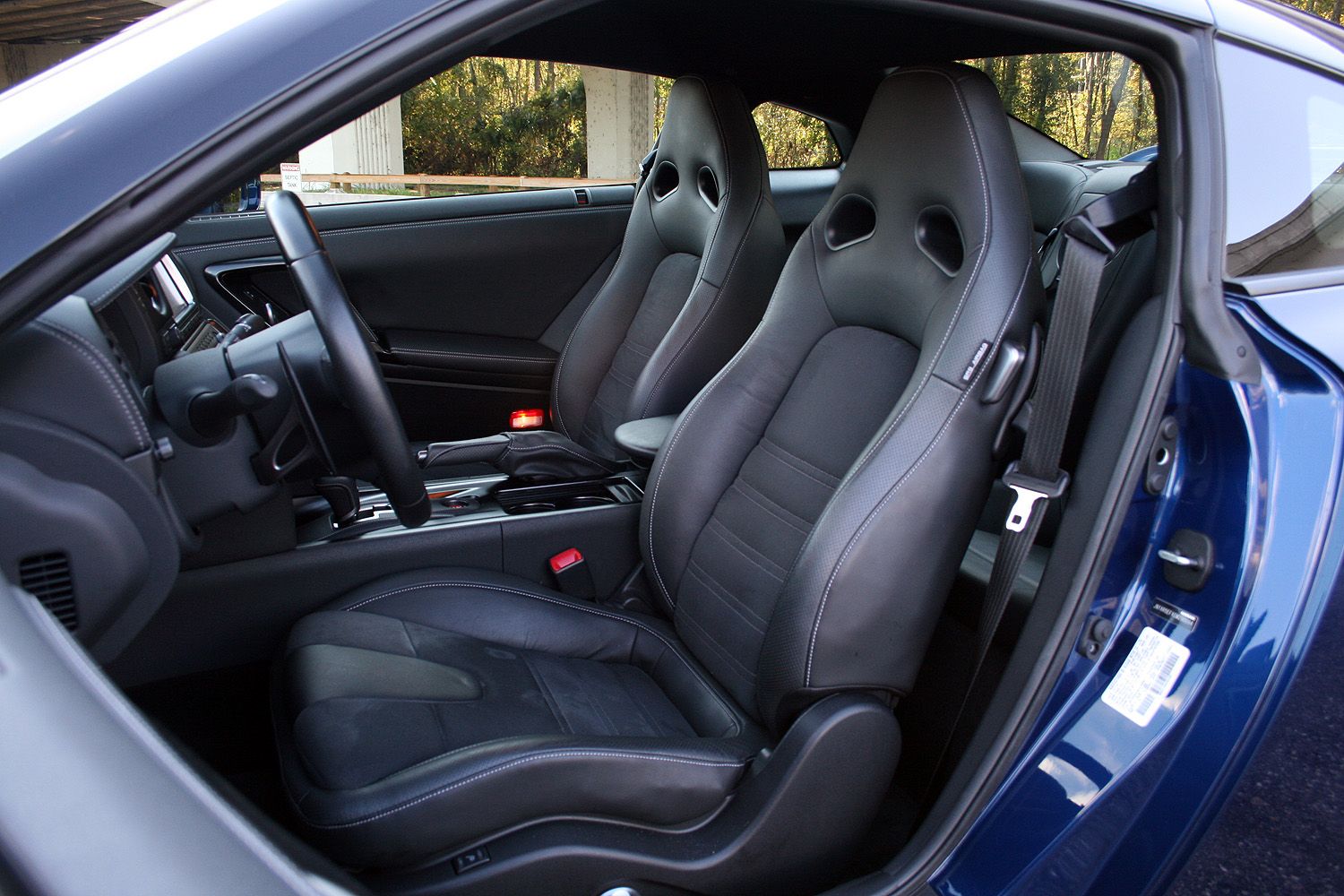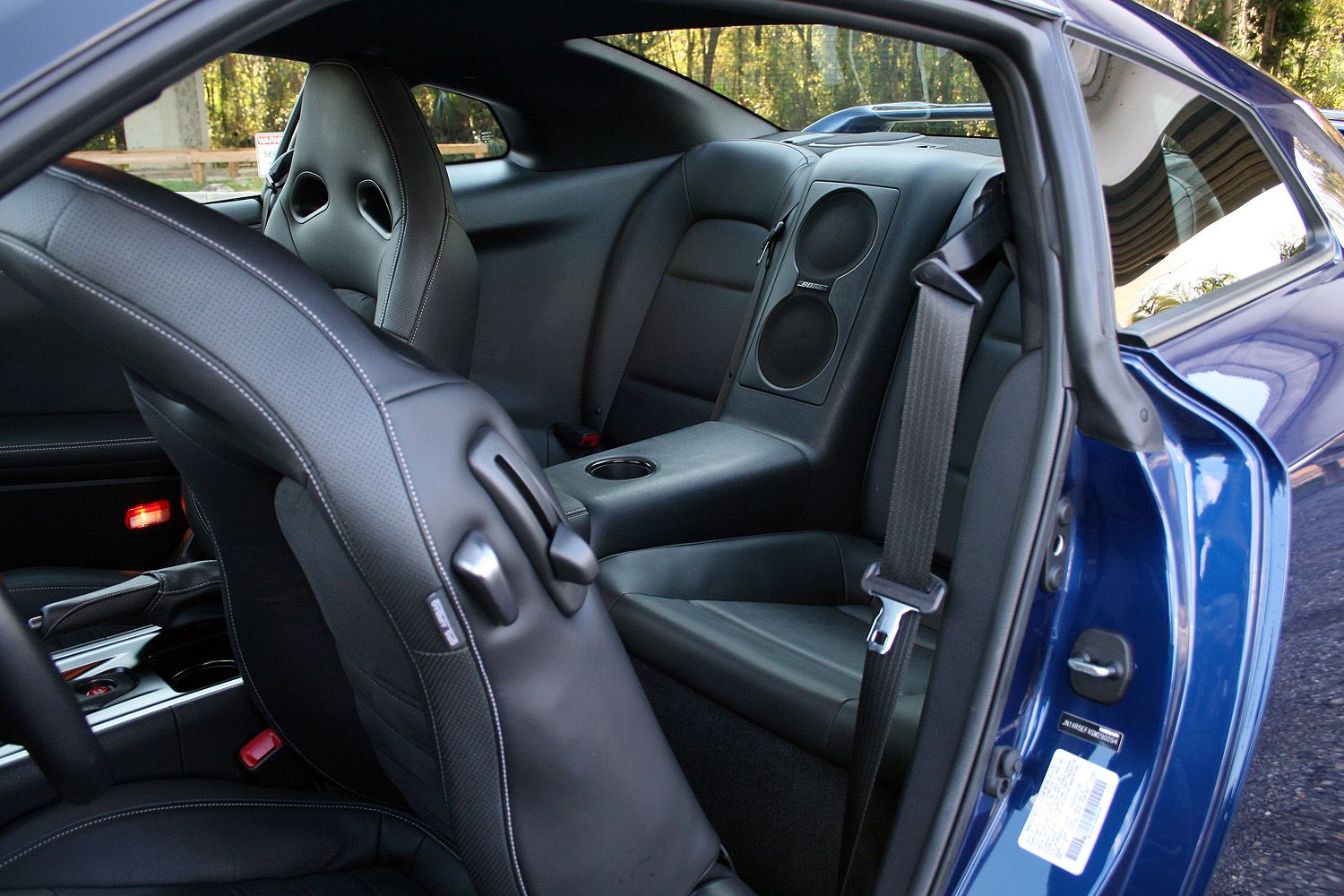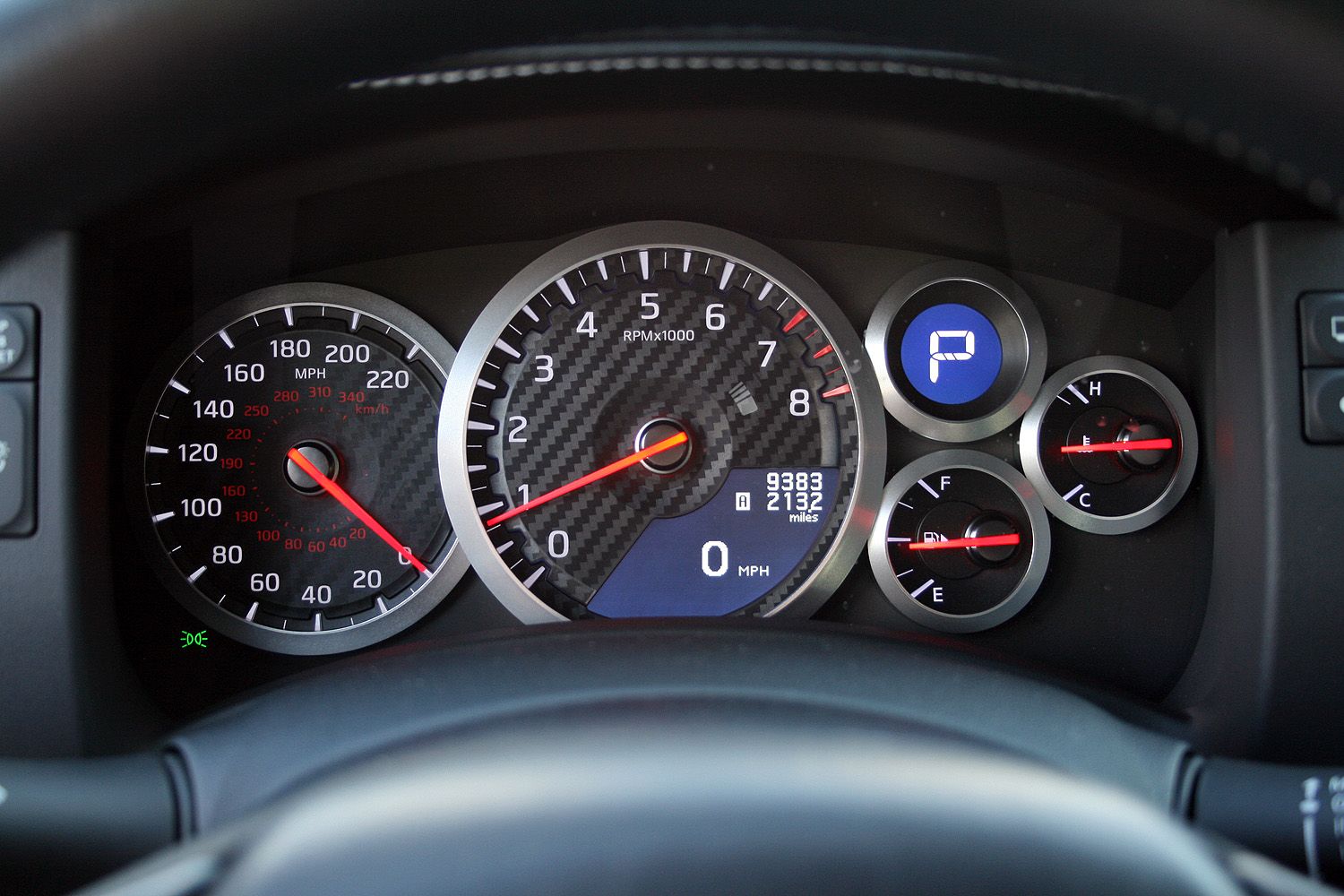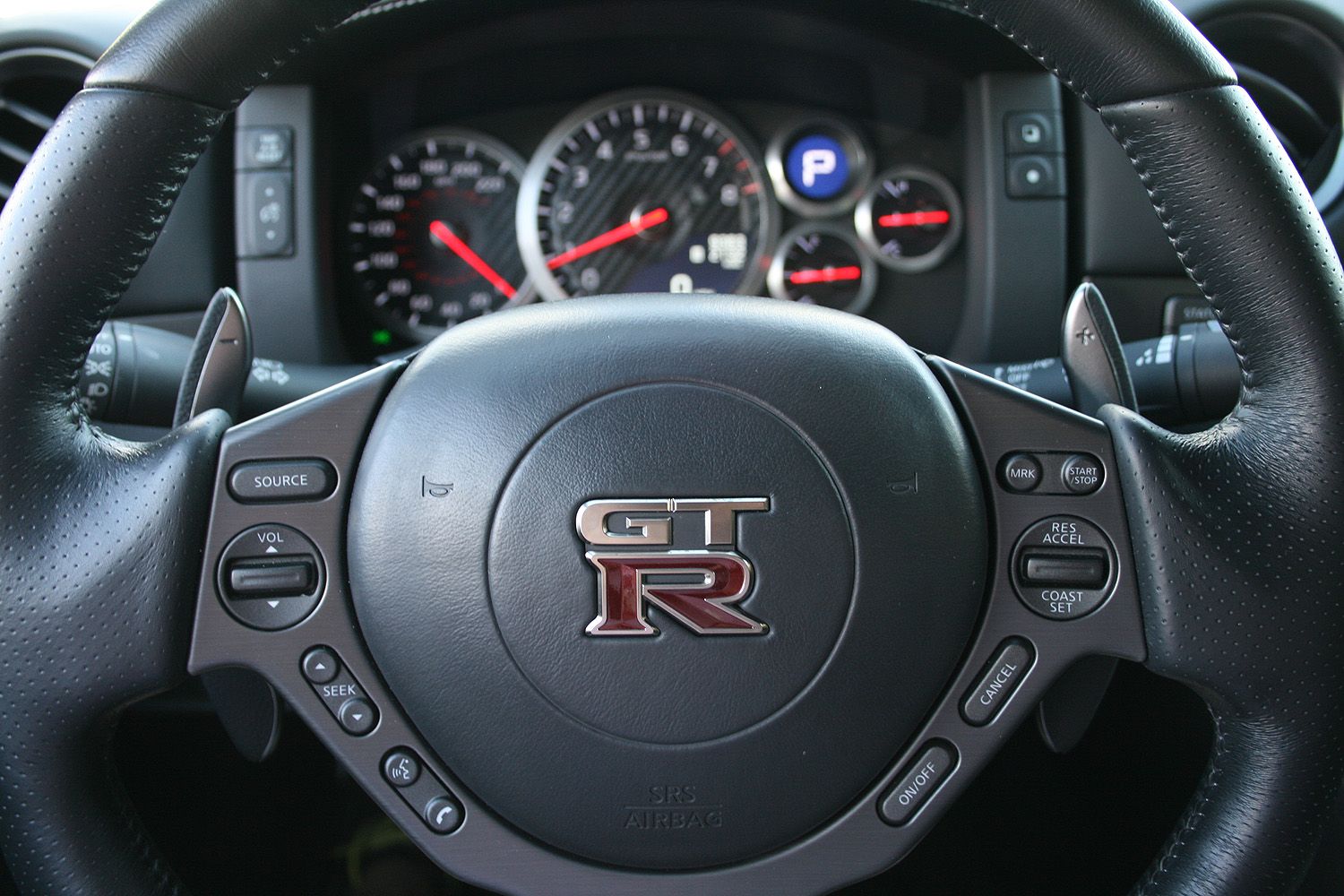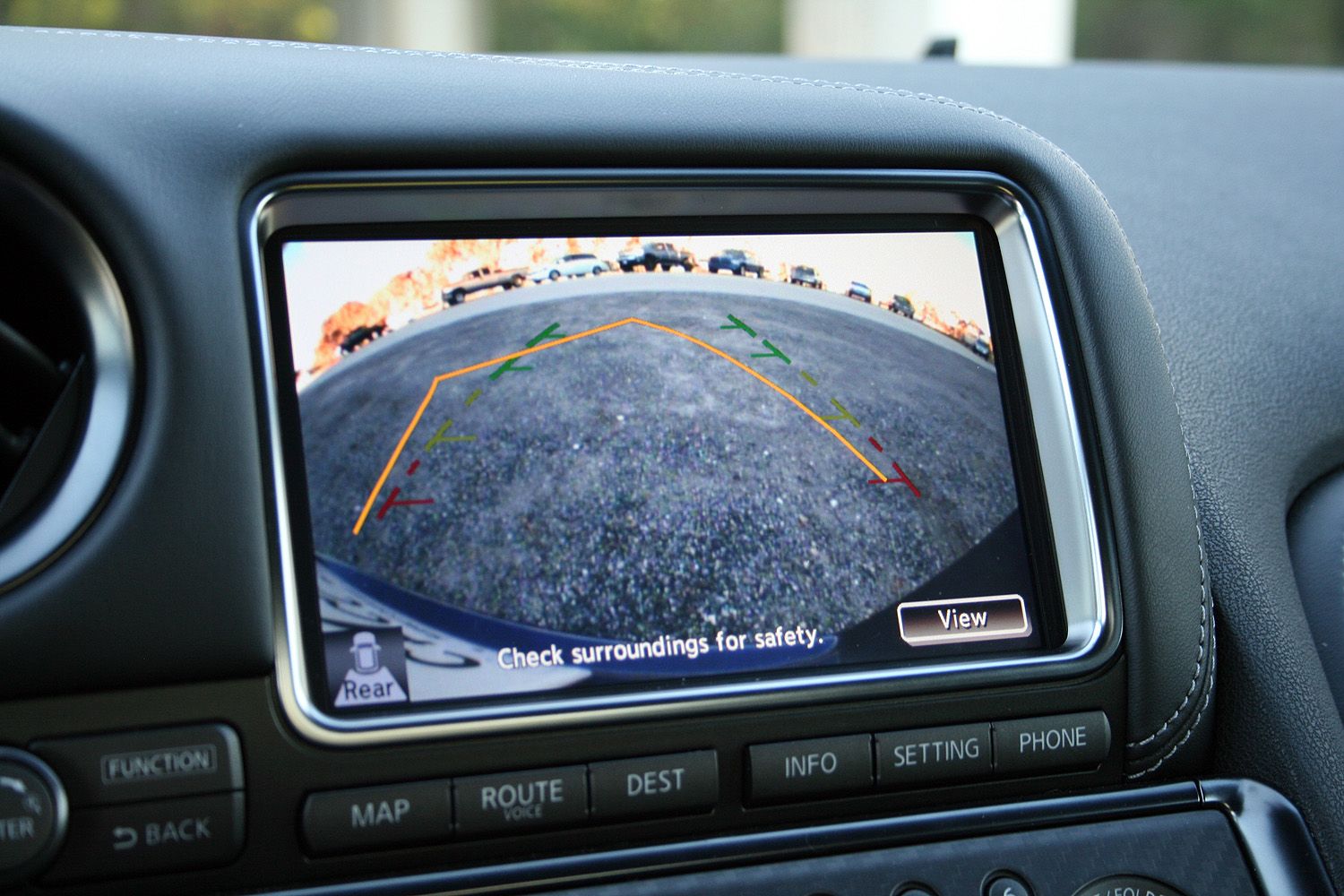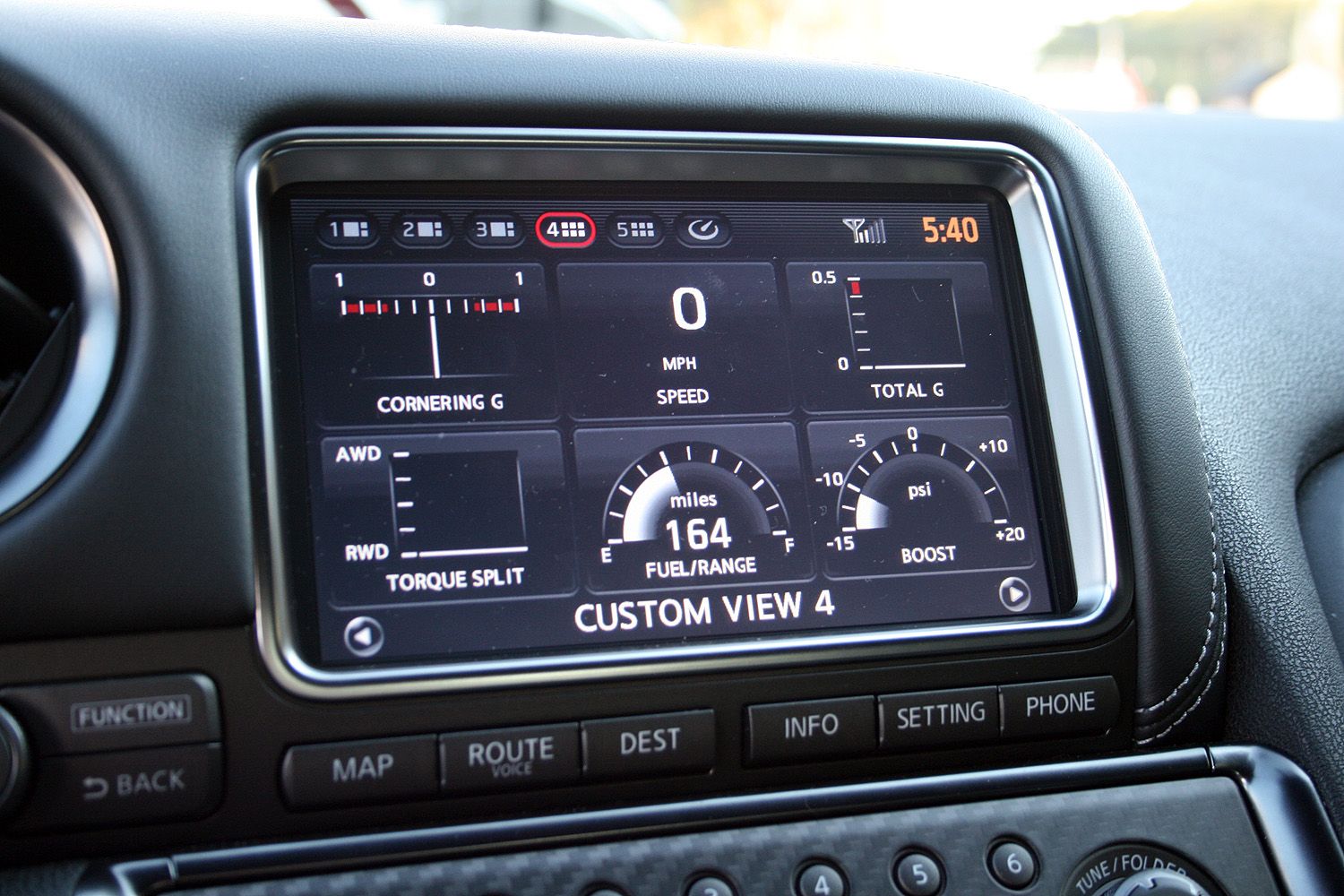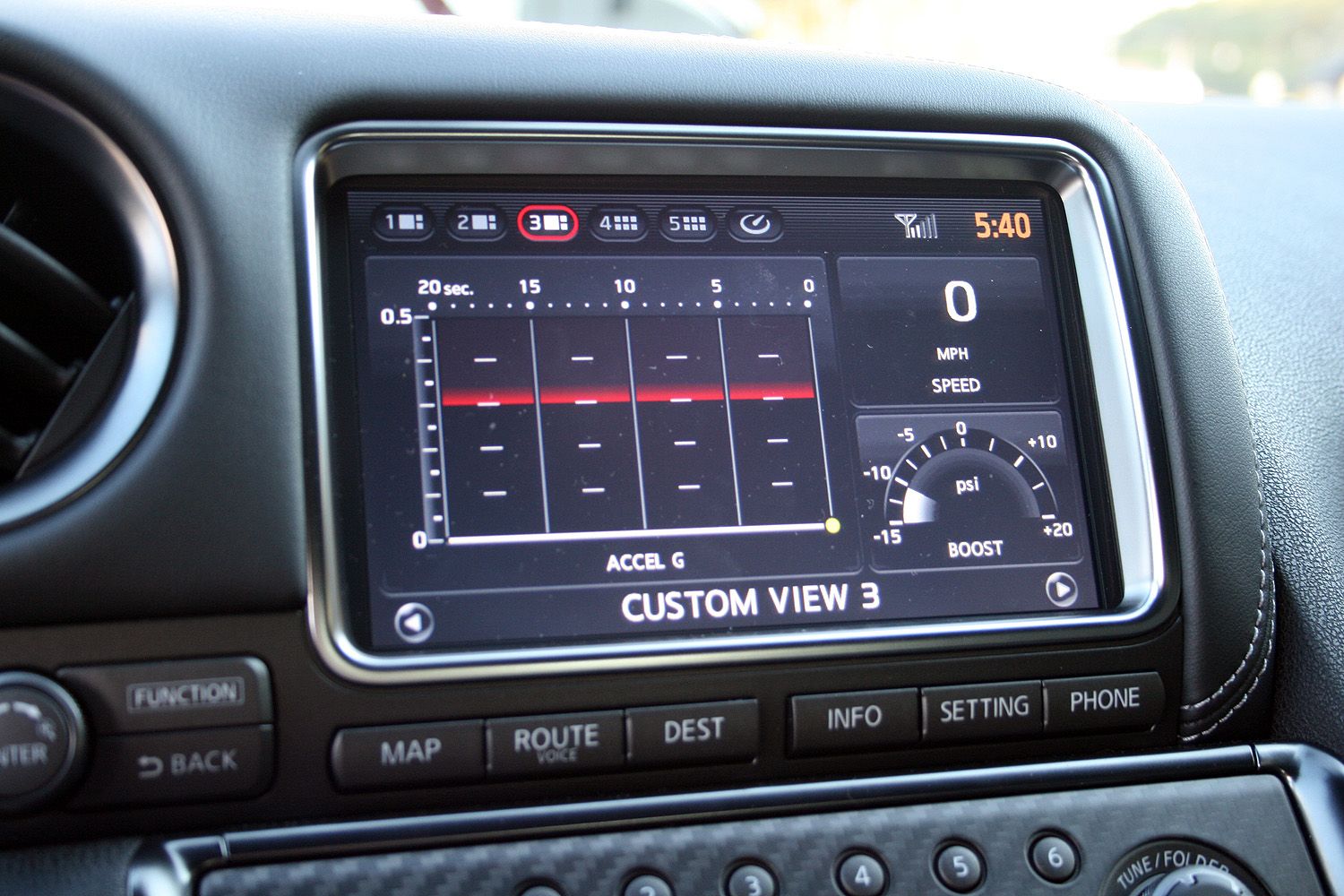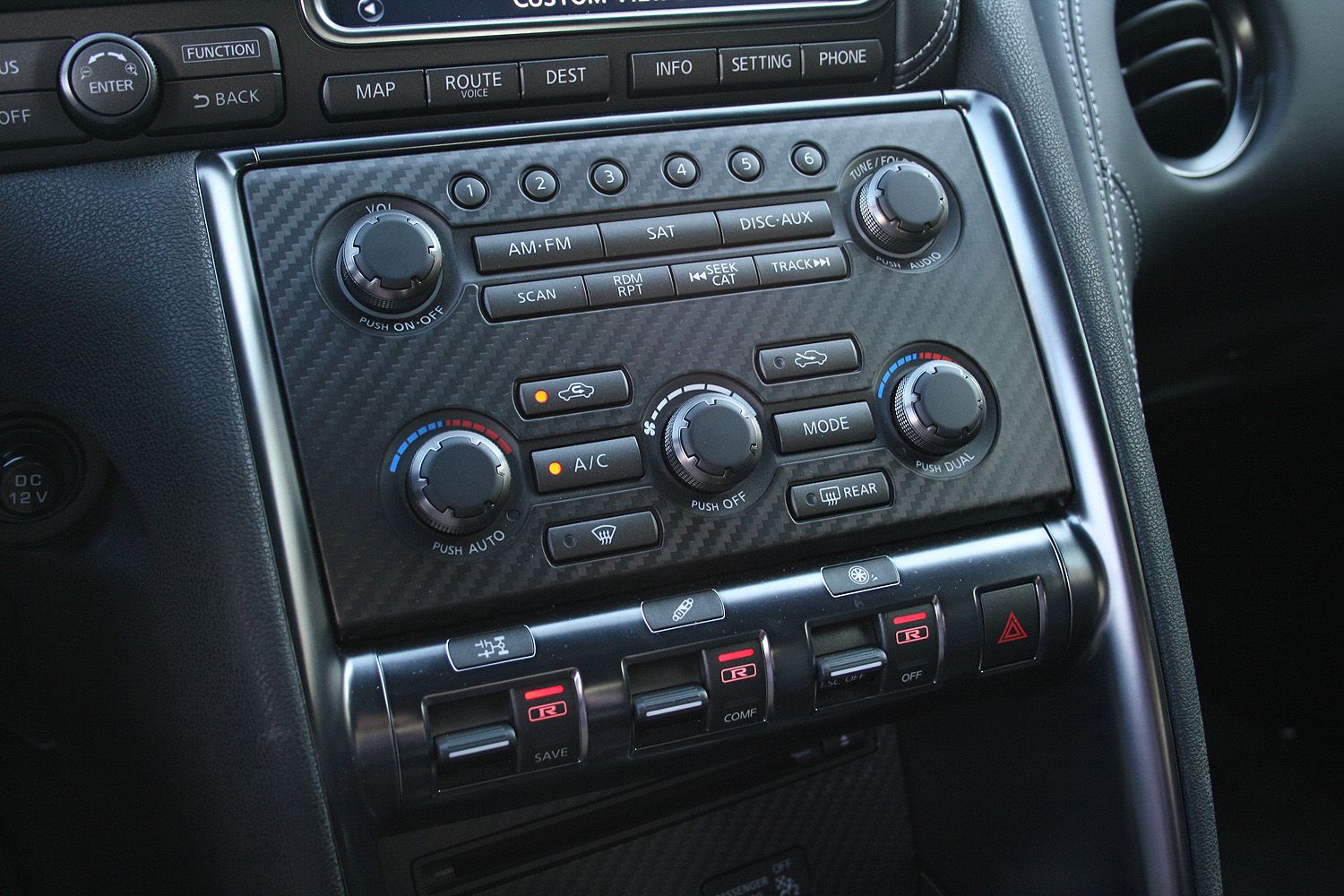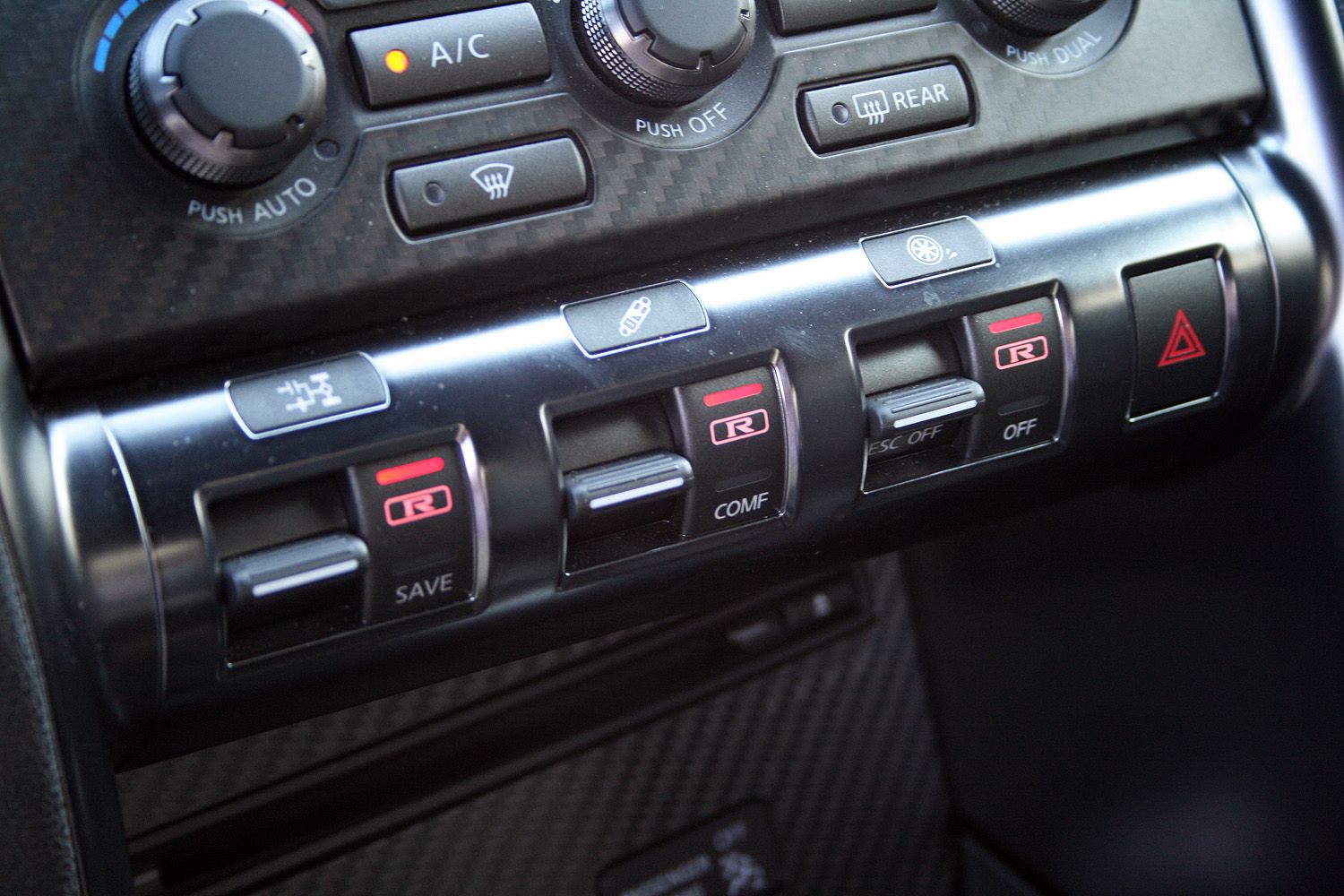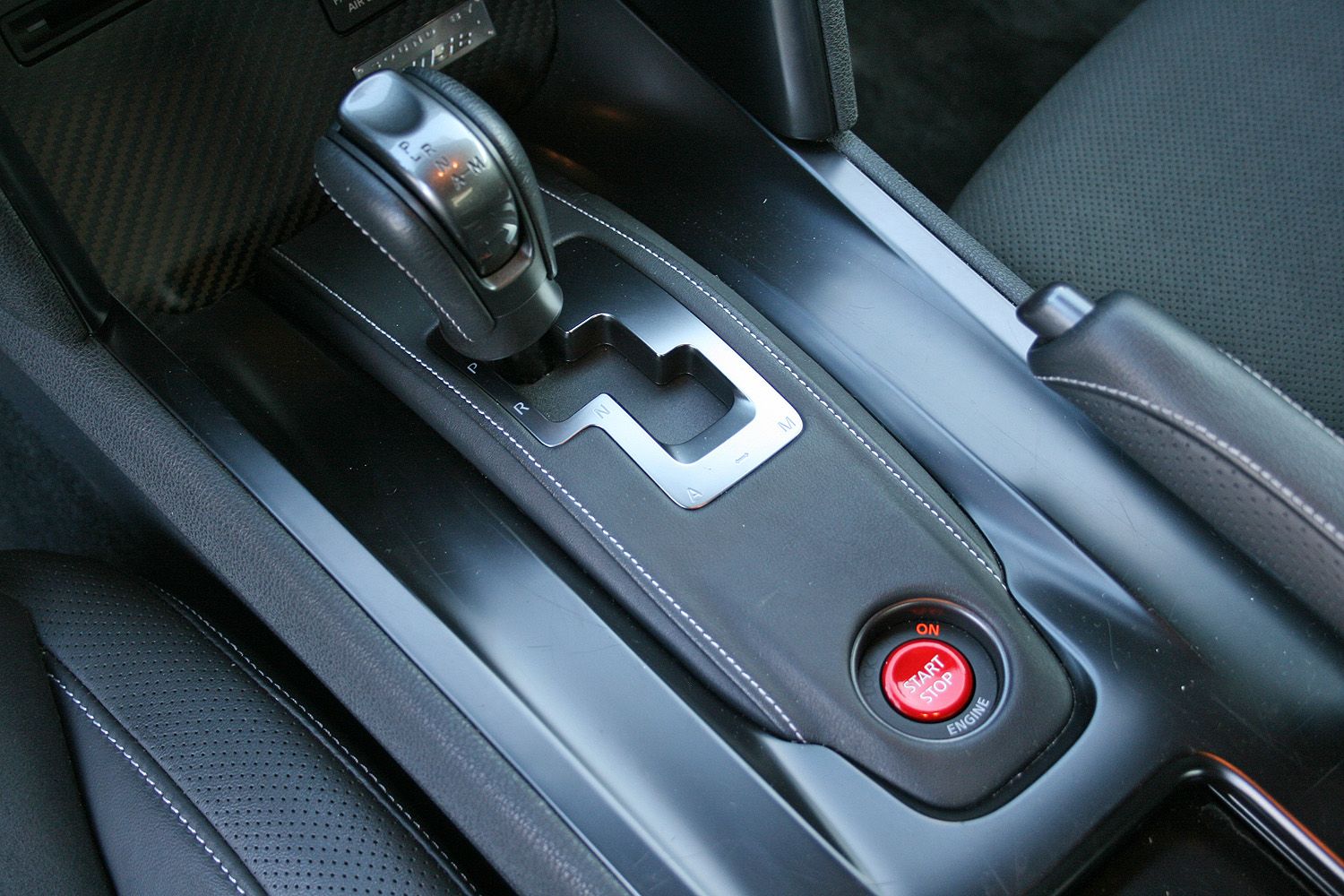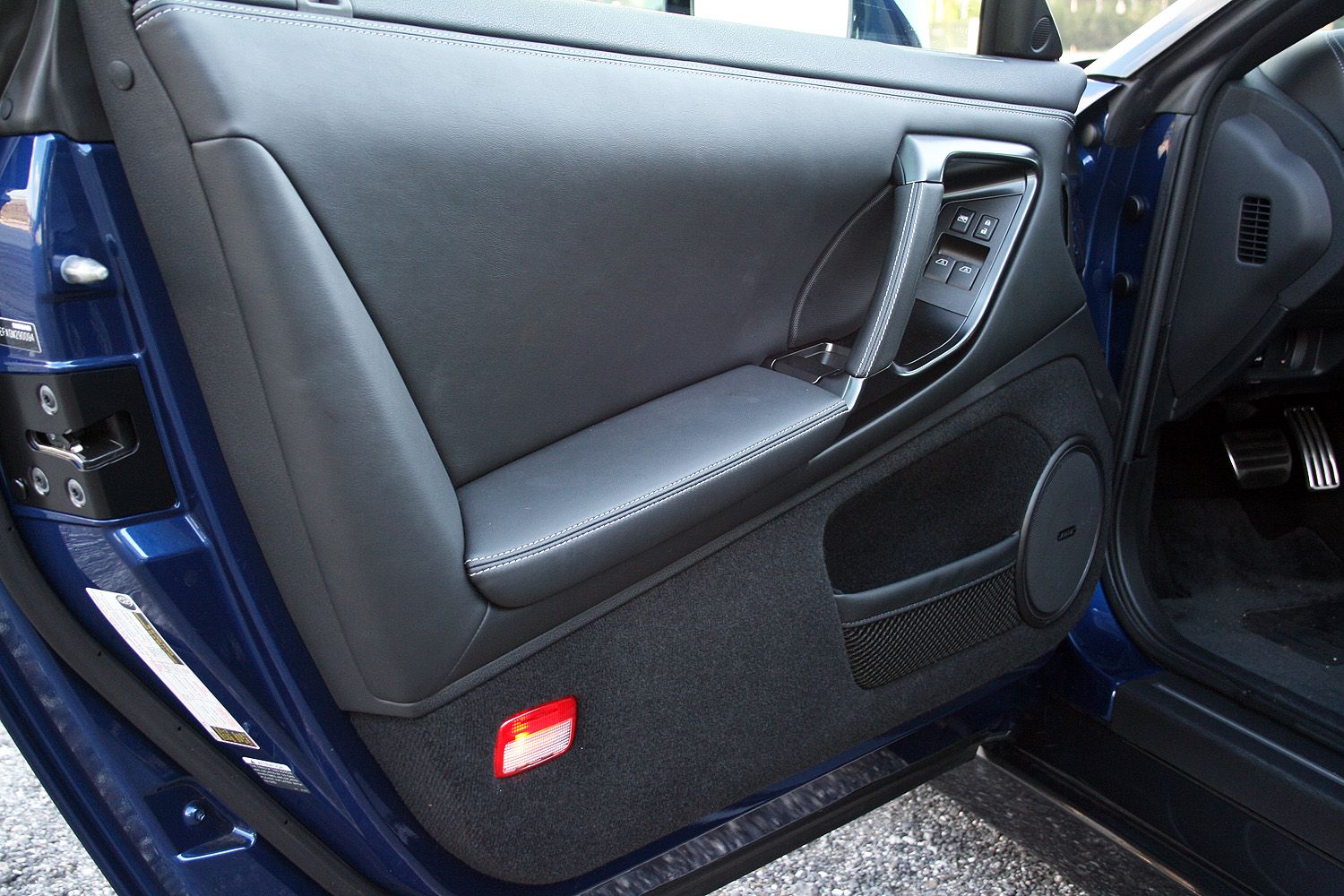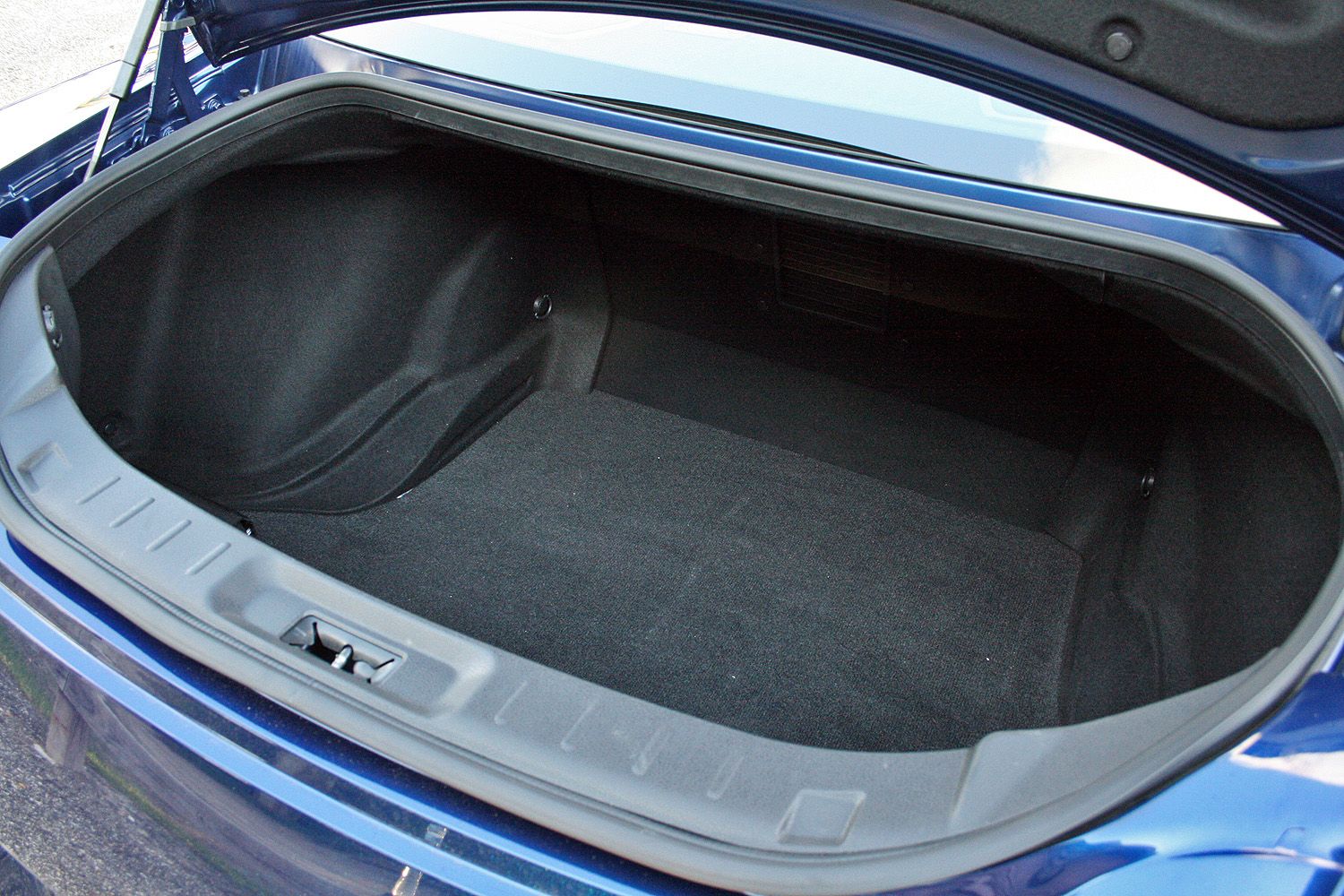The GT-R->ke1592 hasn’t changed much since its introduction in 2009. It still utilizes the 3.8-liter, twin-turbocharged V-6 and powers all four wheels through a six-speed dual-clutch transmission. Nissan->ke62 has boosted engine output, revised details on the exterior’s design, and changed a handful of other talking points over the years, helping to keep Japan’s halo car in the forefront of “affordable supercar”->ke177 list, but car has yet to get a major update.
Rumors have circled suggesting the next-generation GT-R is still on the drawing board. Nissan even confirmed this, saying it’s “more than two years away.” That puts the current GT-R on the spot to uphold its iconic name.
As you can imagine, it does that job just fine. The GT-R continues to impress with its performance characteristics and outright force of acceleration. Sixty mph is reached in three seconds flat and its top speed is eight mph short of 200. The quarter mile happens 11.2 seconds at 125 mph, while braking from 70 mph happens in 151 feet. Impressive indeed
But is the current car enough to keep buyers interested?
Sure, Nissan offers the GT-R NISMO, but even the NISMO is showing its age. It is, after all, just a higher-spec trim that offers more performance capabilities out of the same vehicle.
Regardless, I had the chance to sample a 2016 Nissan GT-R. Decked out in its Premium trim, the car came well equipped. Let’s take a look.
2015 Nissan GT-R - Driven
- Make: Array
- Model: 2015 Nissan GT-R - Driven
- Engine/Motor: V6
- Horsepower: 545 @ 6400
- Torque: 463 @ 3200
- Transmission: six-speed dual-clutch
- [do not use] Vehicle Model: Array
Walk-Around Video
Exterior
Though some find the GT-R to be homely, many – including myself – admire the Nissan’s sharp lines, curvy accents, and purposeful design. The car is all about function. The front grille has a large lower opening for cooling, brake ducts for piping fresh air to the front rotors, and a fairly low front chin splitter. The functionality continues onto the hood with two air vents. Out back, the rear spoiler helps with downforce without looking too boy-racerish. The lower fascia is also purposefully sculpted, helping with airflow.
Of course, there are aspects purely for eye candy. The massive, chrome-plated exhaust tips that mirror the round taillights look fantastic while the angular roof, chrome side vent accents, and LED daytime running lights all add character.
The GT-R’s current look was new for 2011. The front grille, lower rear diffuser, and rear cooling ducts all give the car a somewhat new look over the 2009-2010 model years. Other changes were made as well, including a stiffer front strut tower bar, larger diameter front brake rotors, lighter wheel options, and sticker tires.
Living with the GT-R is fairly simple – as far as the exterior goes. The trunk opening is large enough for a medium sized suitcase and the trunk itself holds a surprising amount. The main doors open wide for easy access, while the foldout door handles take some getting used to. Ground clearance isn’t too low to be cumbersome, but does require a watchful eye on steep driveways.
Interior
The 2011 update also brought upgraded interior refinements, though they are hard to spot by today’s standards. Much of the interior is plastic and hard-touch materials. The dashboard is topped with soft leather held together with French stitching. Leather is also found on the steering wheel, side bolsters on the seats, and door panels.
Speaking of the seats, the front buckets are my biggest complaint about the GT-R. They are outright uncomfortable – at least for my body. I found the side bolstering – especially on the bottom – to be too short and narrow. A minimal amount of adjustments mean you conform to the seats rather than the other way around. Long distance driving would be a bear, while on-track driving isn’t aided at all.
Other than the negatives with the seats, the interior is useful, informational, and fun. The navigation screen offers a full array of gauges for engine, transmission, and performance stats, helping the driver stay informed about the powertrain. The large tachometer in the main gauge cluster is easy to read. It includes a digital speedometer that supplements an almost useless analog speedometer to the left. Fuel and coolant temperature are the only other analog gauges.
If going fast is the goal, the three toggle switches located midway down the center stack are eager to be flipped. Simply hold them in the up position for two seconds, and the computer adjusts each parameter. The first switch controls the engine, the seconds controls the suspension, and the third controls the traction management system. Pressing each toggle downward engages comfort mode, save for the traction control, which turns it off. Don’t turn that off, by the way. Ever.
Despite its supercar capabilities, the GT-R is capable of being a daily driver. The back seats held my three-year old’s car seat well, the cup holds work okay, though they are mounted somewhat too far rearward, and outward visibility is good.
Drivetrain
Sure it takes all slew of parts to make a vehicle operate, but the stand-out piece with the GT-R is its drivetrain. At the heart of the system is a hand-built, 3.8-liter V-6 has two turbochargers force-feeding it cold air. It produces an impressive 545 horsepower and 463 pound-feet of torque at 6,400 and 3,200 rpm respectively. Power is sent rearward to a mid-mounted, six-speed, dual-clutch automatic transmission that fires off gear changes like a machine gun. The power is then divided between the rear differential and the front driveshaft, which then runs forward off the side of the transmission. The front diff is located nearly under the engine. With all four wheels putting power to the ground, launches happen with nearly no wheel spin.
Some may lament the GR-T doesn’t offer a manual transmission, but the BorgWarner-produced dual-clutch keeps the turbos spooling with ease, all thanks to its lightening fast sifts. What’s more, gear heads will love the transmission’s noises. Around town, the gearbox whines, clanks, and chatters, giving a true sensation of just how purpose-built the transmission really is. Steering column-mounted paddles provide a great substitute for do-it-yourself shifting.
Driving Impressions
The GT-R is capable of being a daily driver, sure, but that’s not what it feels most happy doing. The car is most fun when pushed. Sadly, that can’t happen to the fullest extent on public roads. Heck, may racetracks don’t allow the GT-R to fully stretch its legs. On the roads encompassing the north Orlando area in my home state of Florida, the GT-R felt bored. The straight streets don’t allow for corning fun, though they do give room for short blips of the throttle. Short is the key word in that, as the car simply melts into warp speed like the Millennium Falcon.
The steering is precise with no dead space on center, throttle response is as tactile as you’d imagine, outward visibility is confidence-inspiring, and the transmission’s clanks and jolts are a fun part of the experience. The digital gauges within the infotainment screen are a data geek’s dream, allowing the driver to keep tabs on much more info than normally found in production cars. Watching the gauges work is entertaining.
Still, the GT-R is let down by its uncomfortable seats and somewhat chintzy interior. I would expect more in a $100,00+ car.
Pricing
Along with added power and newer looks come a higher price tag. The 2009 GT-R carried a starting price of roughly $70,000. These days, Godzilla costs a wee bit more. The base car with no options has an MSRP of 101.770. The $31,000 increase is substantial, to say the least.
My GT-R came dressed in the Premium guise, which is ironically the base trim. Adding to the $101,770 price is one option: carpeted floormats with the GT-R logo. Nissan charges $295 for those. Add on a $1,595 destination charge, and my tester totaled out at $103,660.
Competition
Porsche 911 Turbo S
Perhaps the GT-R’s greatest competitor is the 911 Turbo S. The two are fairly evenly matched, performance wise. A 3.8-liter flat six-cylinder that is also twin-turbocharged powers the Porsche. It cranks out 560 horsepower and 516 pound-feet of torque that is sent to an AWD system. Swapping gears is a seven-speed, dual-clutch transmission. The sprint to 60 mph takes just 2.9 seconds and its top speed is listed at 197 mph.
Though while the Nissan is less expensive, the Porsche does offer a far more luxurious experience within the cabin. As for that price, the base 911 Turbo S starts at $182,700.
Read our full review here.
Audi R8 V10
For those looking at something more flashy than either the Porsche or Nissan, Audi has the R8. The hot looker comes with a mid-engine design and packs an AWD system to propel it forward. The engine most comparable to the GT-R is the V-10. It displaces 5.2 liters and makes 525 horsepower and 391 pound-feet of torque. Buyers actually have a choice of transmissions: the S tronic automatic or an honest row-your-own manual transmission.
In its quickest form, the R8 V10 hits 60 mph in a relatively sluggish 3.4 seconds and can hit a top speed of 196 mph. Prices for the R8 V1- start at $153,900 for the manual and $162,900 for the S tronic.
Read our full review here.
Conclusion
The Nissan GT-R might not be the newest supercar on the block, but it still holds its own against some of the greats. Even pitted against other supercars and hypercars, the GT-R still gives a great bang for the buck. Only the Corvette Stingray Z06 and Jaguar F-Type R AWD come close to offering this much performance at this price point, with the Corvette being on the low side, while the Jaguar takes the higher end of the pricing scale.
While we’ve got a couple more years to wait for the next-generation GT-R, it seems Nissan still has a solid competitor in its showrooms. Hopefully the next GT-R will address the issues with interior comfort and feel, along with bringing a new look to the table. Even more, rumors suggest Nissan is working on a hybrid powertrain system. Not only will the hybrid drive add even more performance, but also the allure of having such a technology-filled engine bay will draw crowds and hungry buyers.

